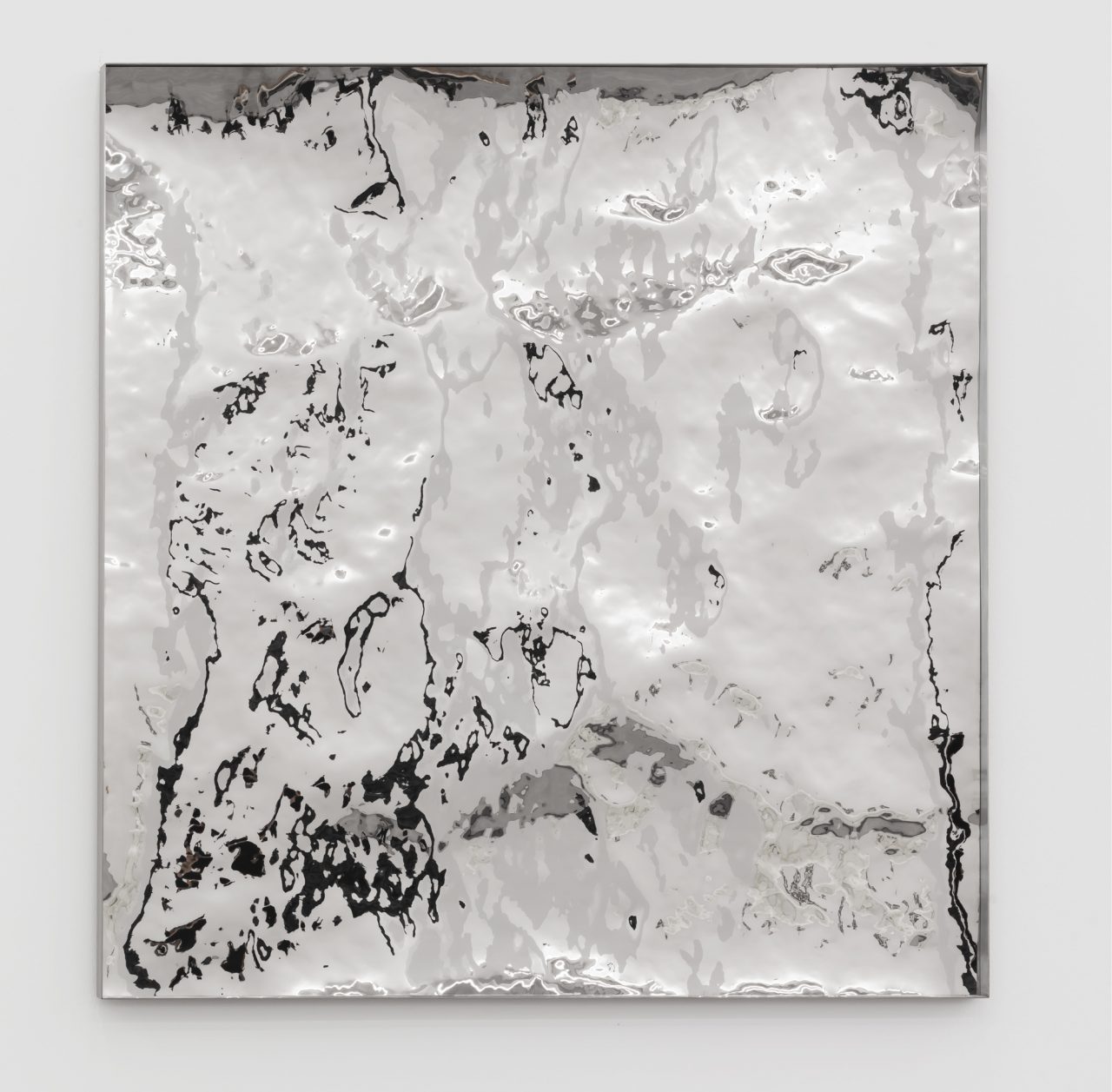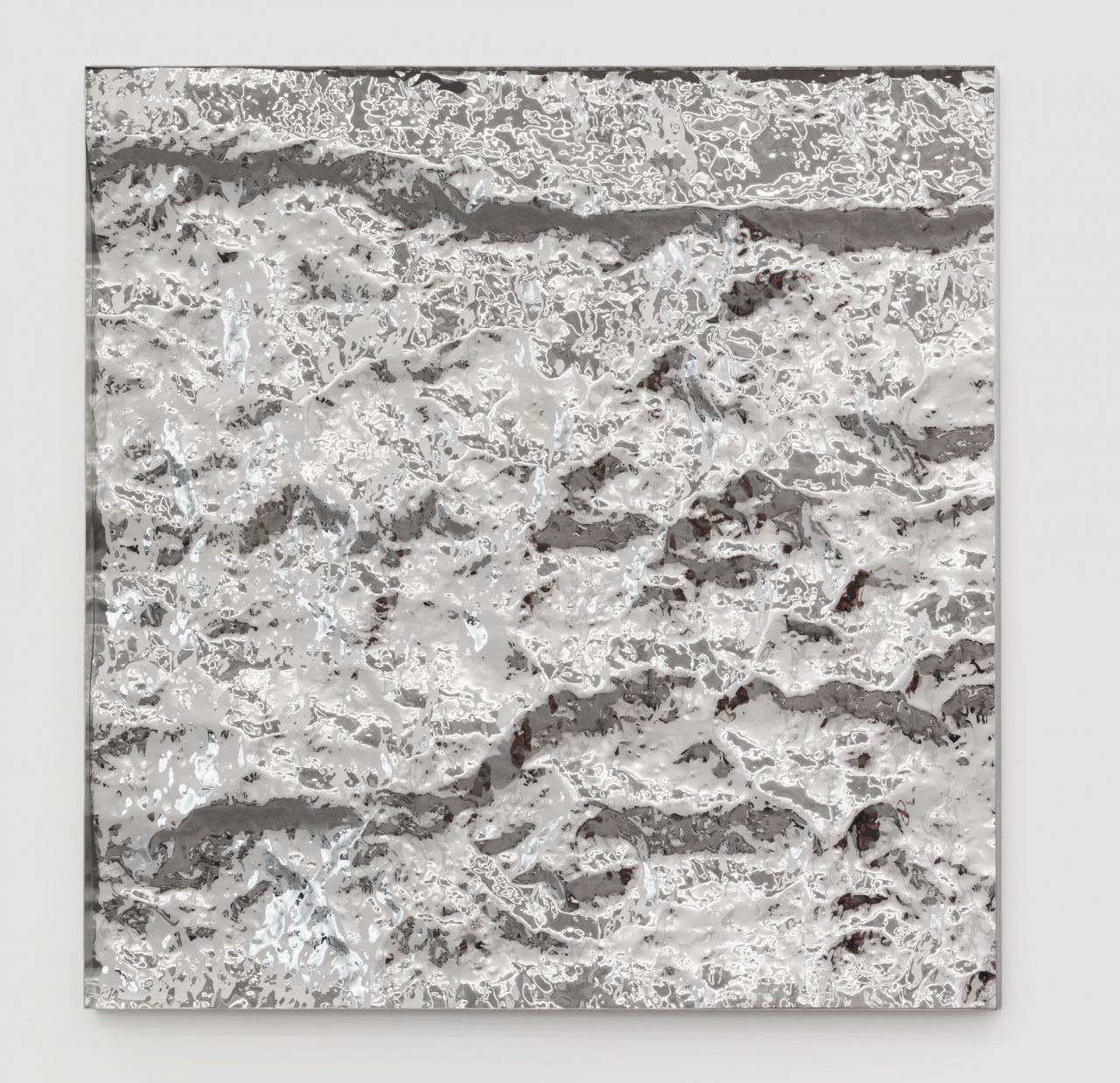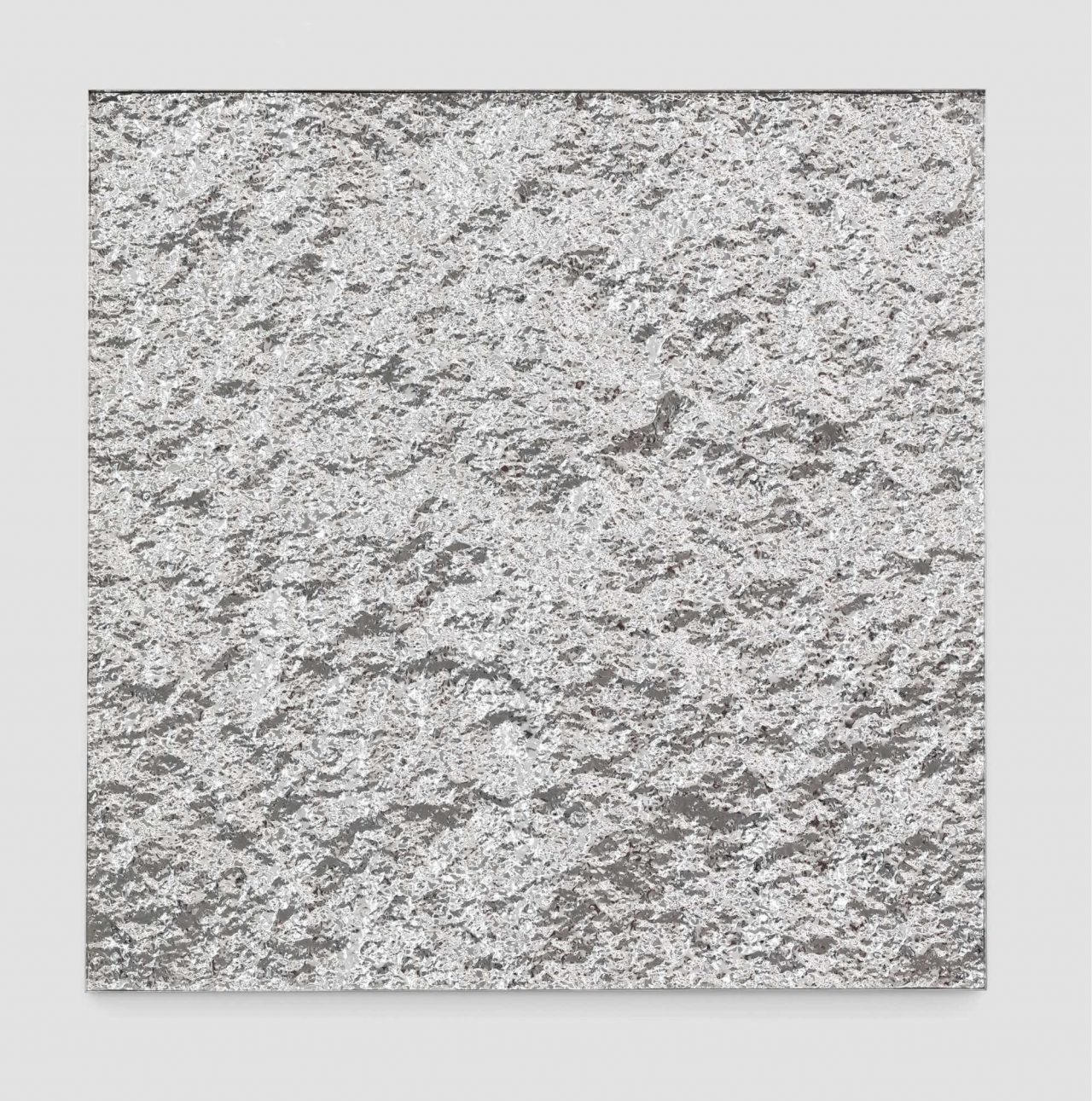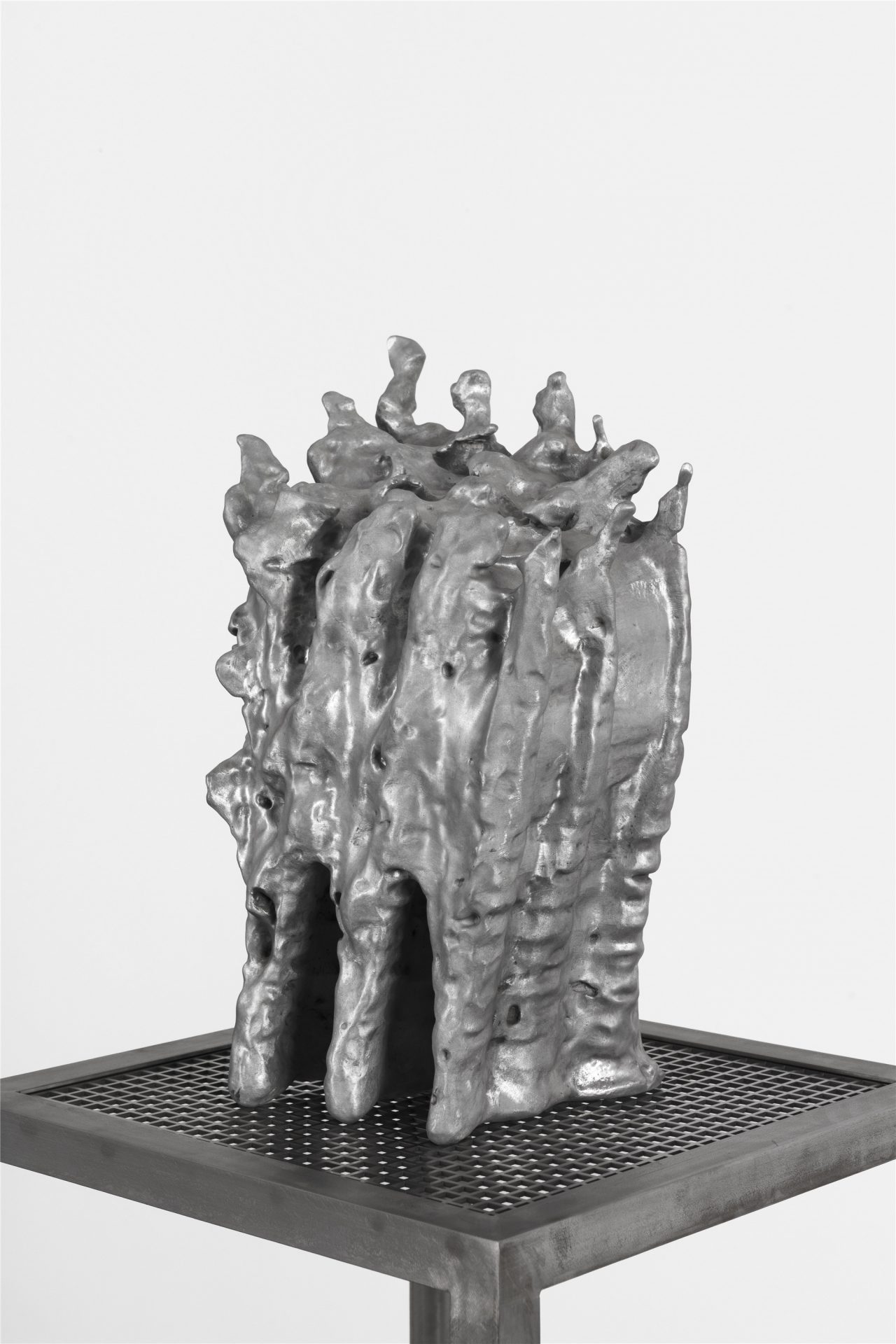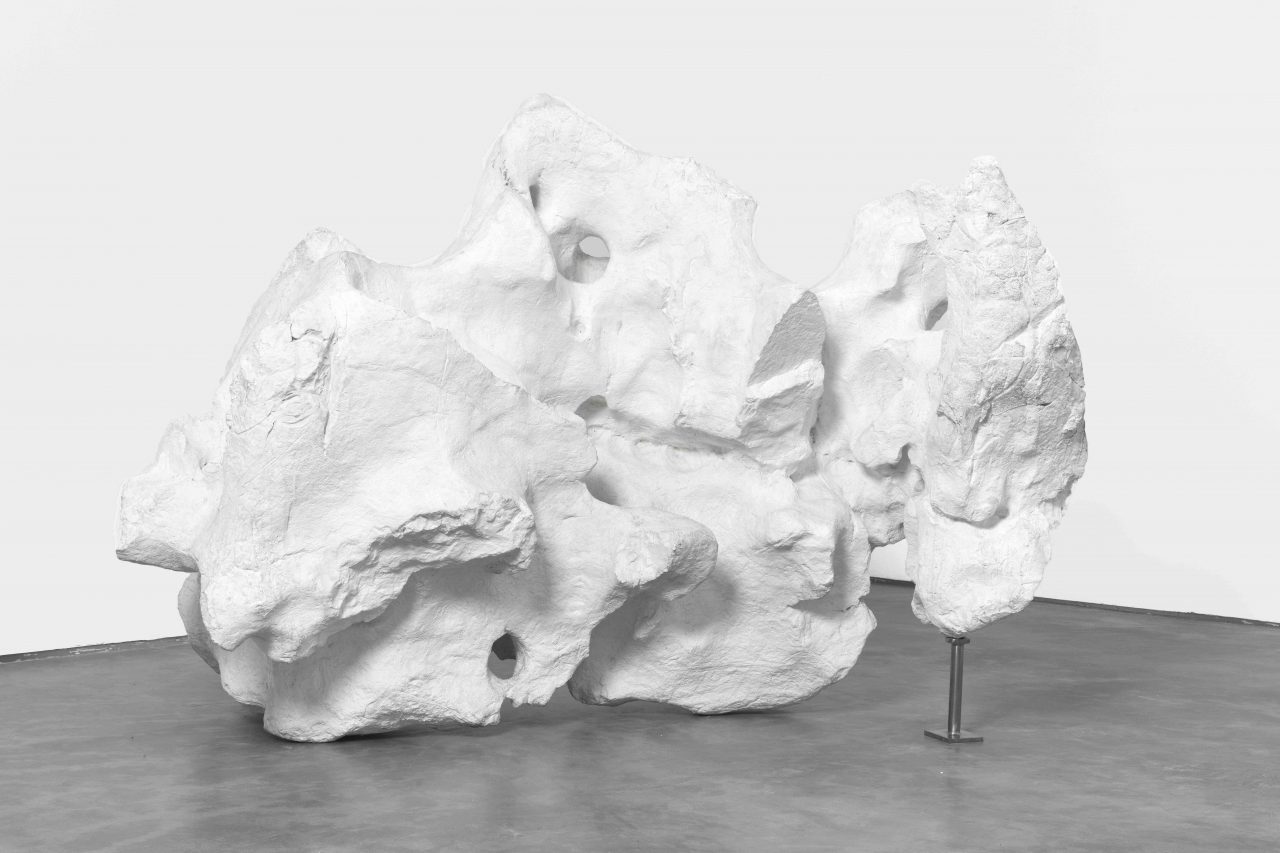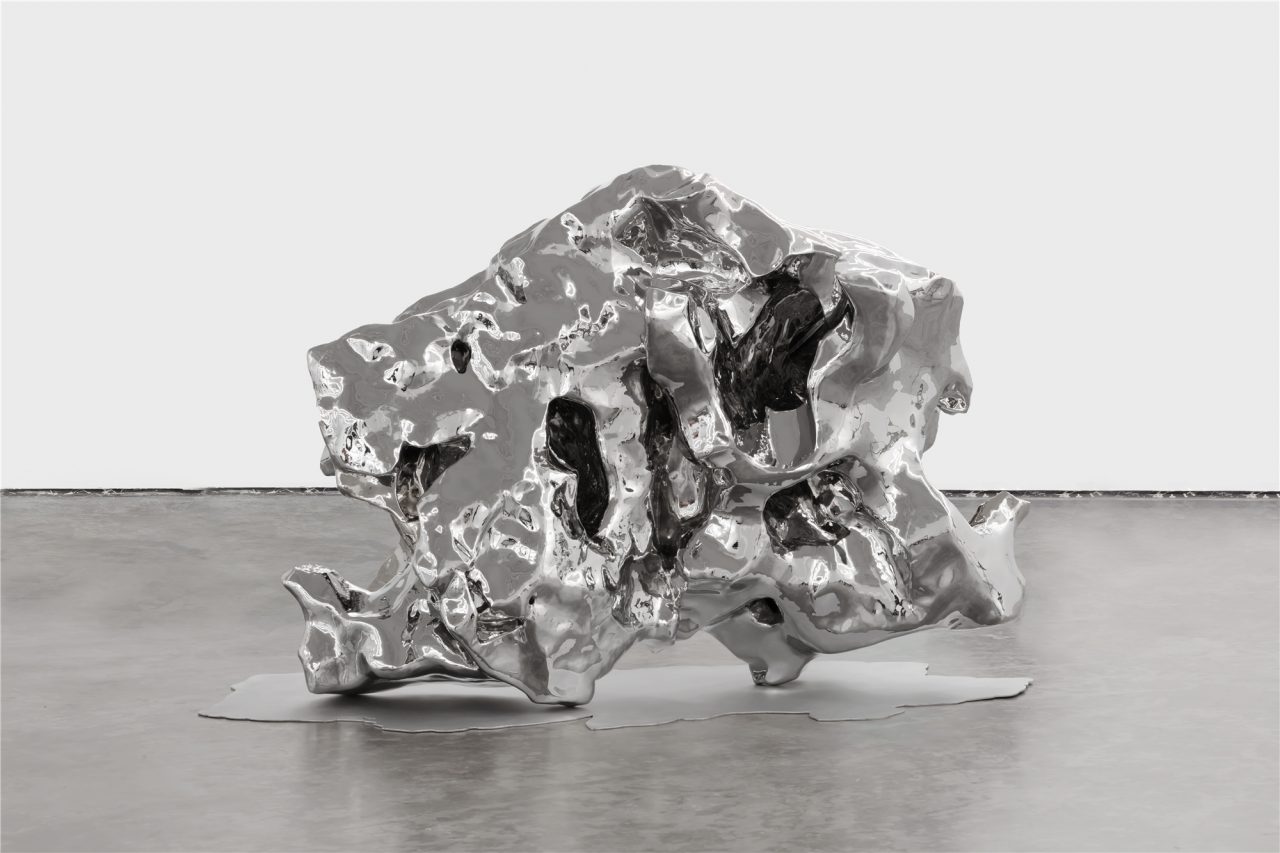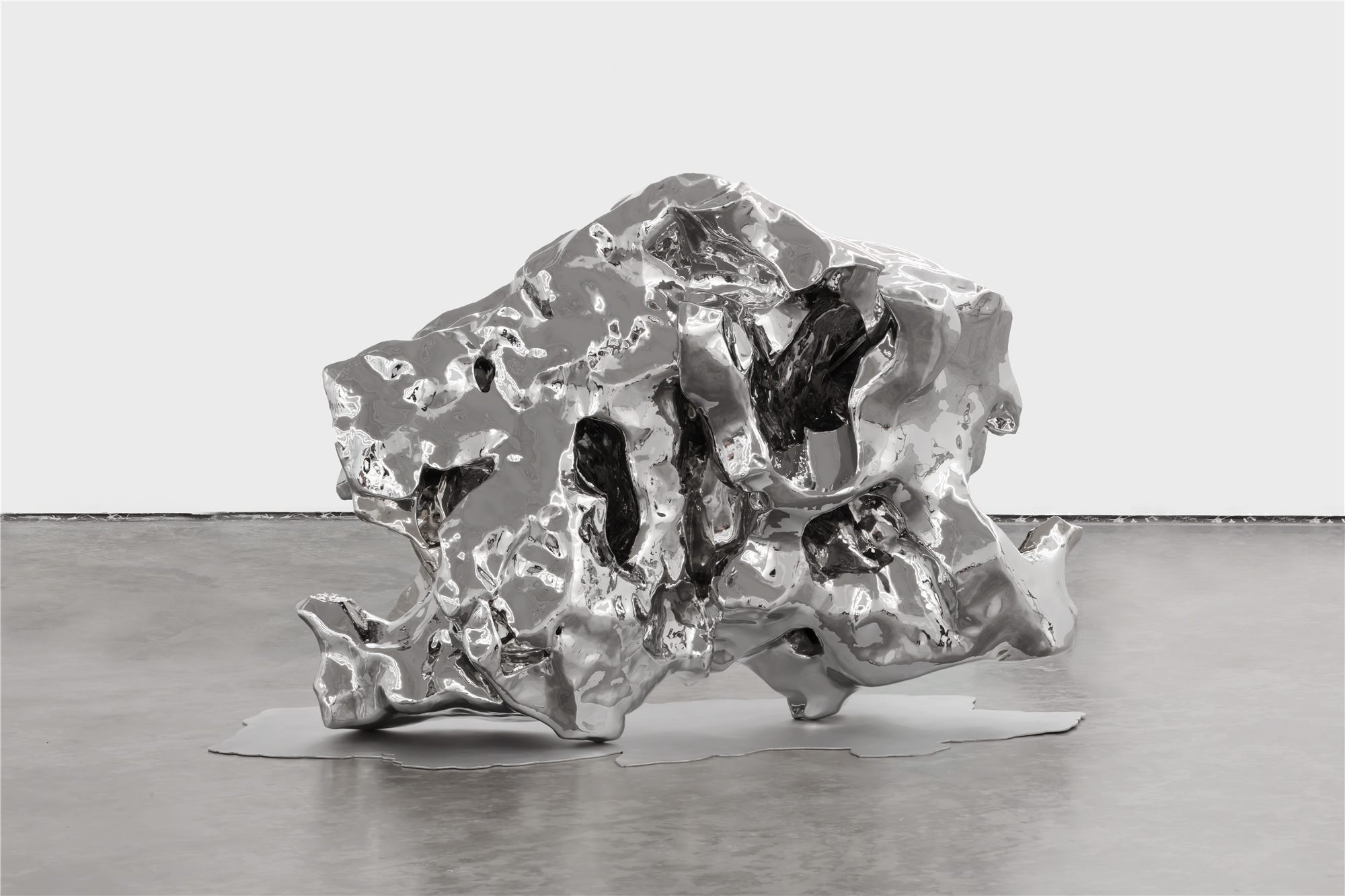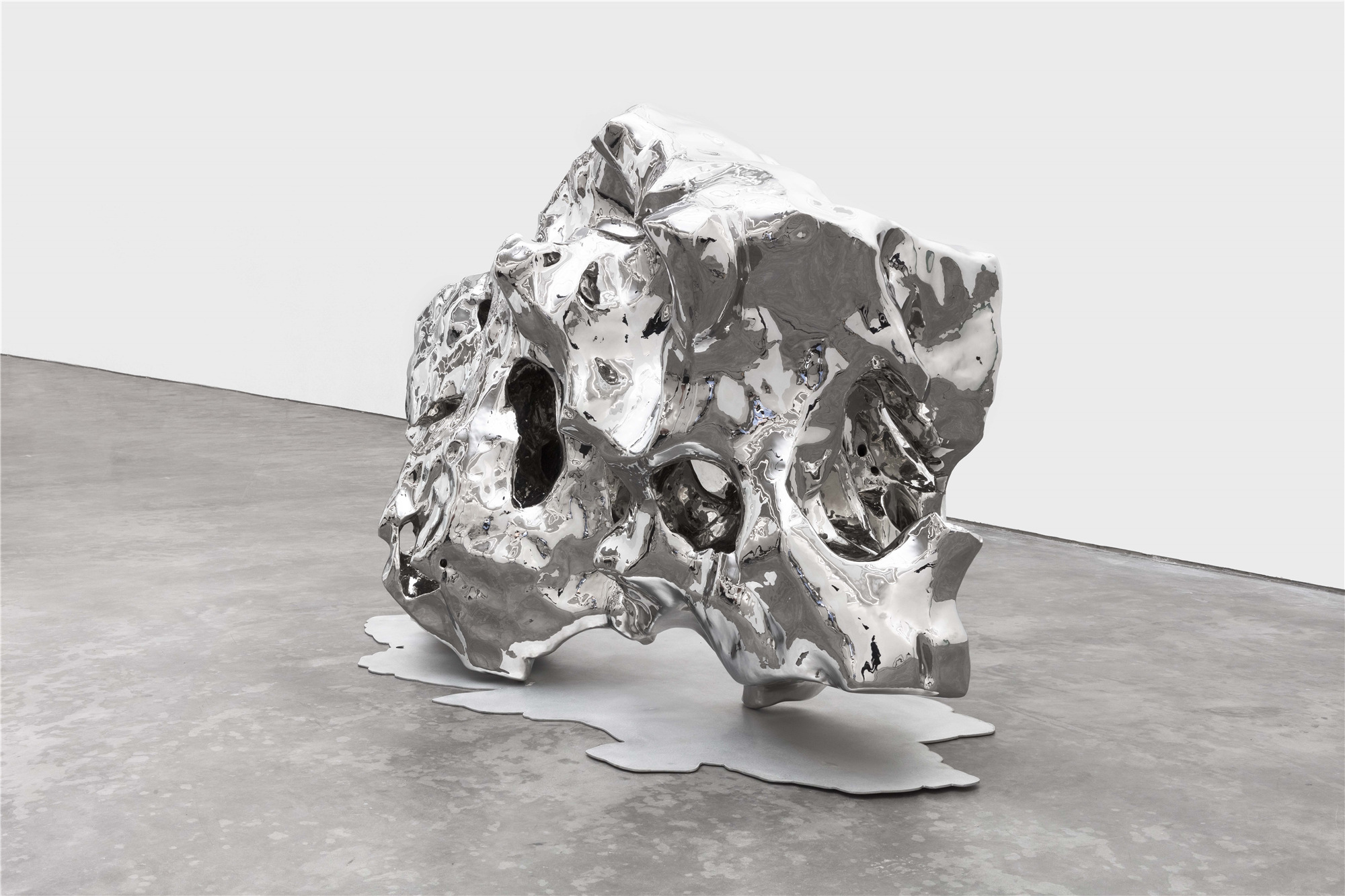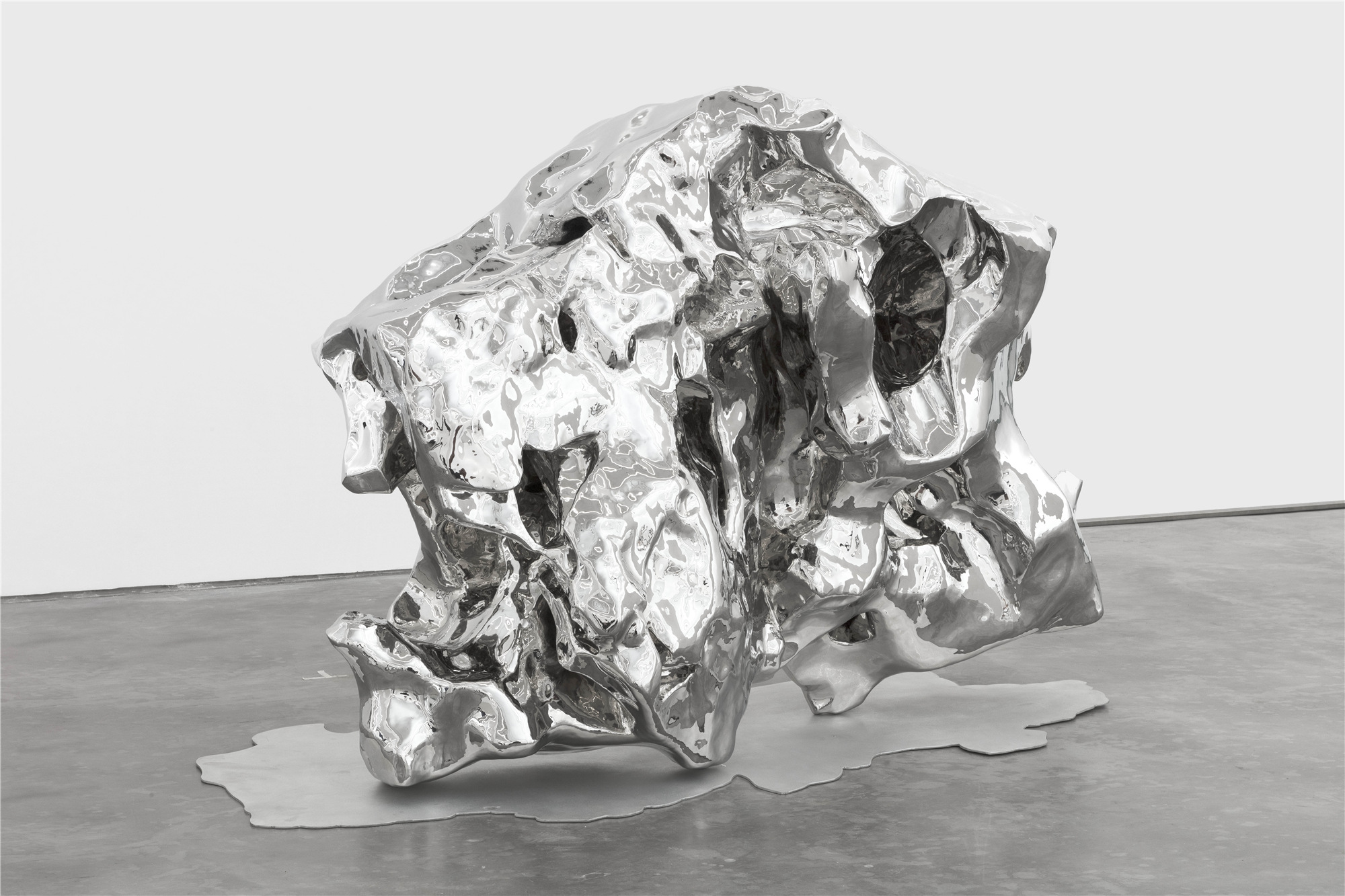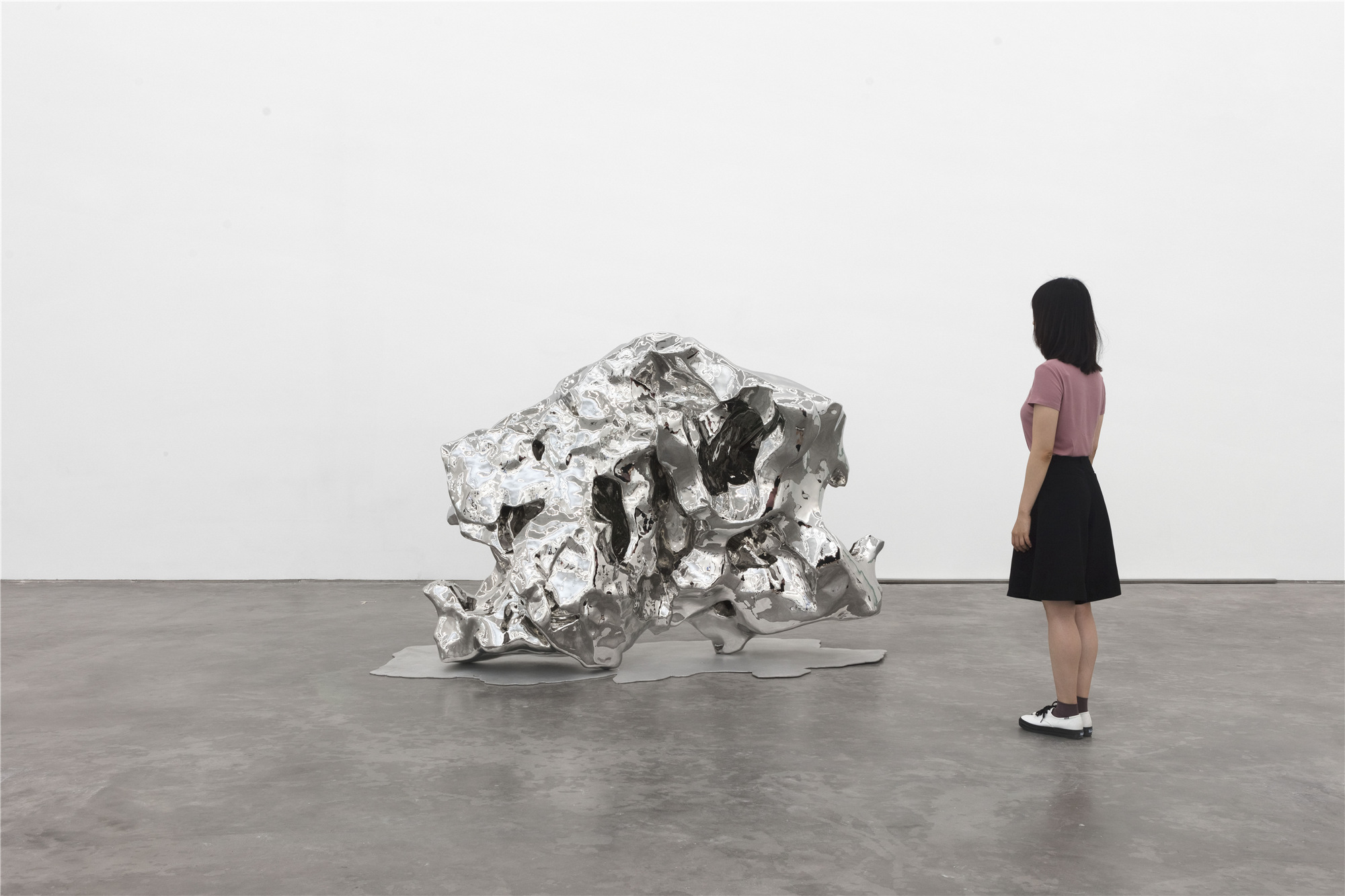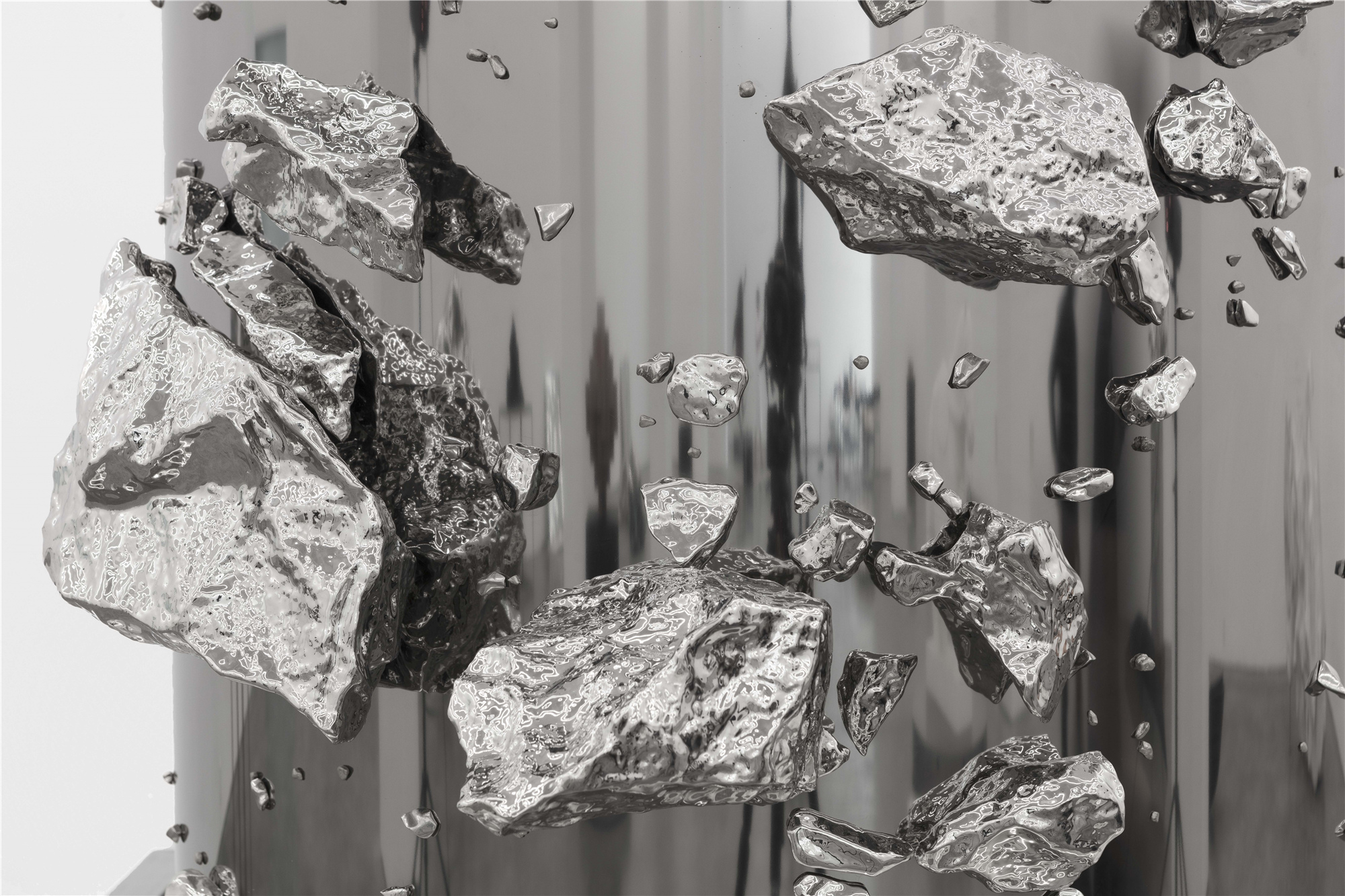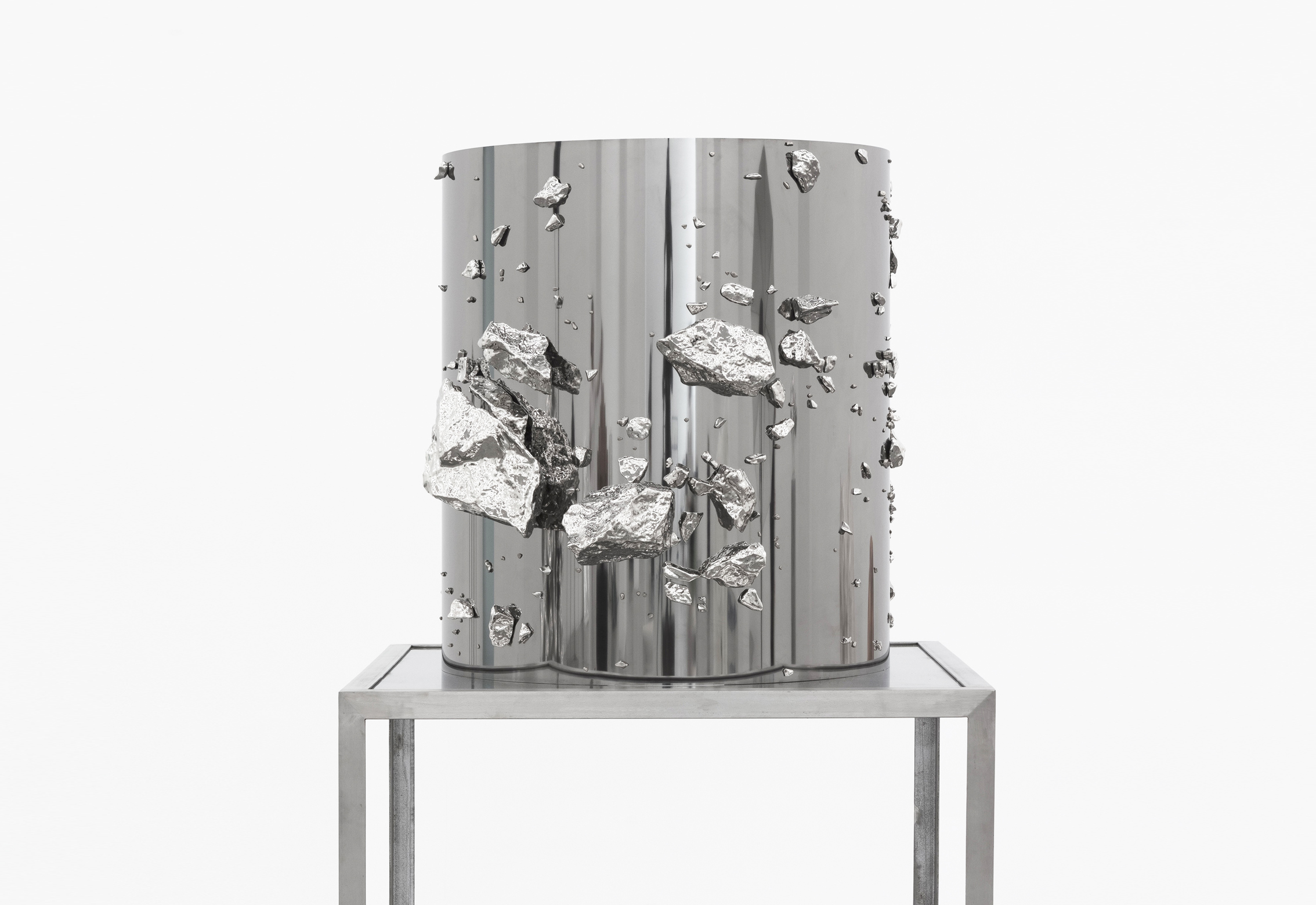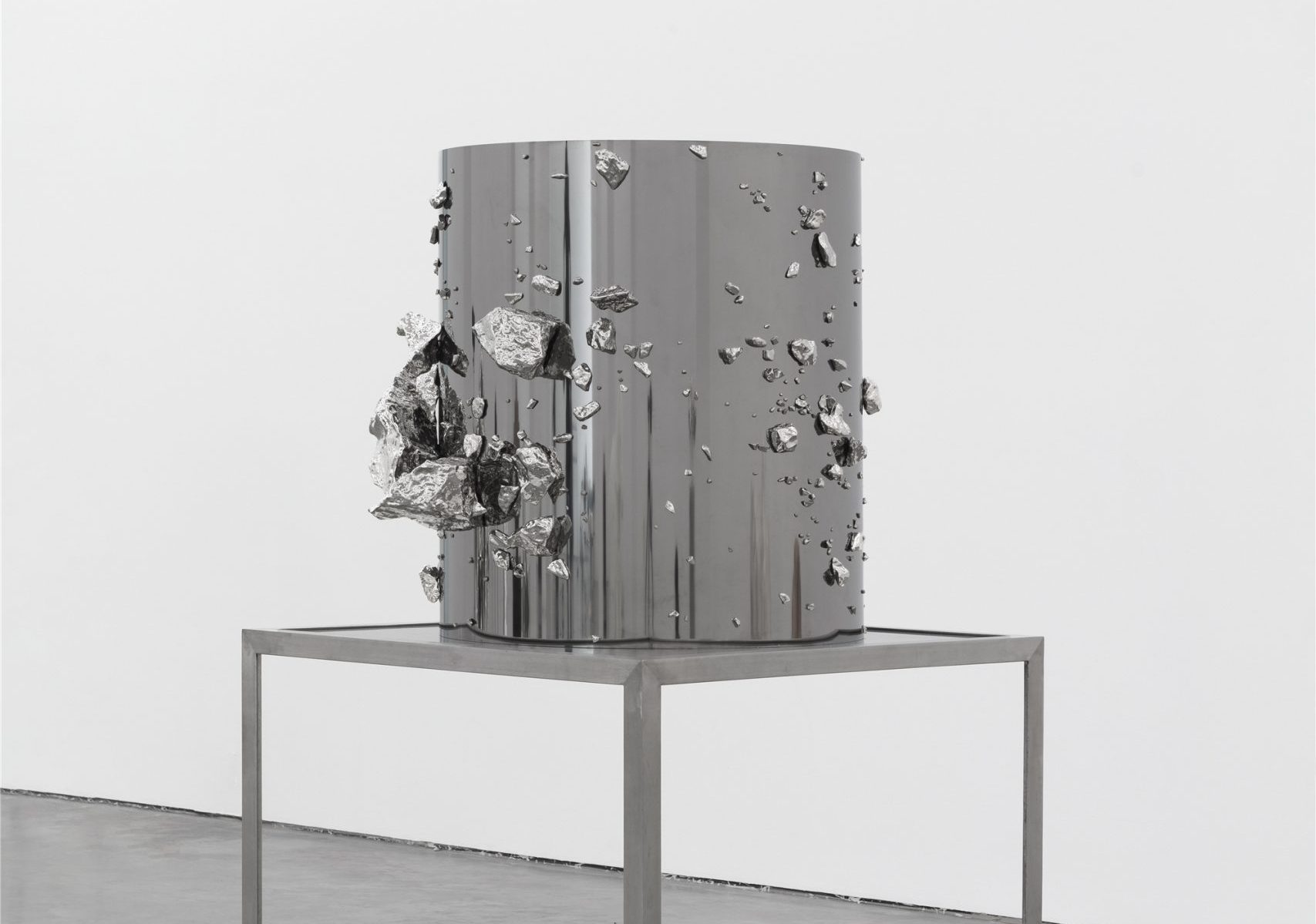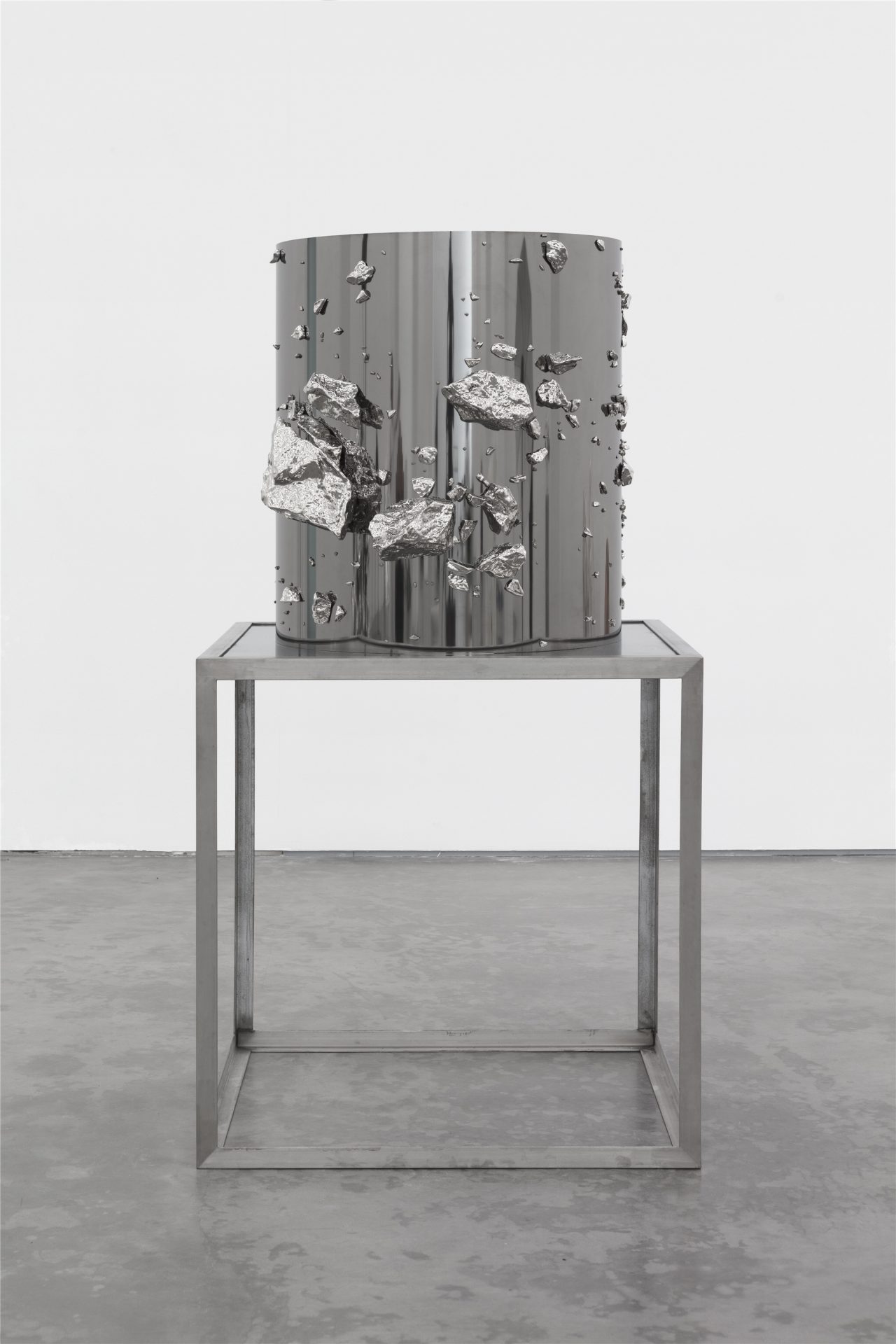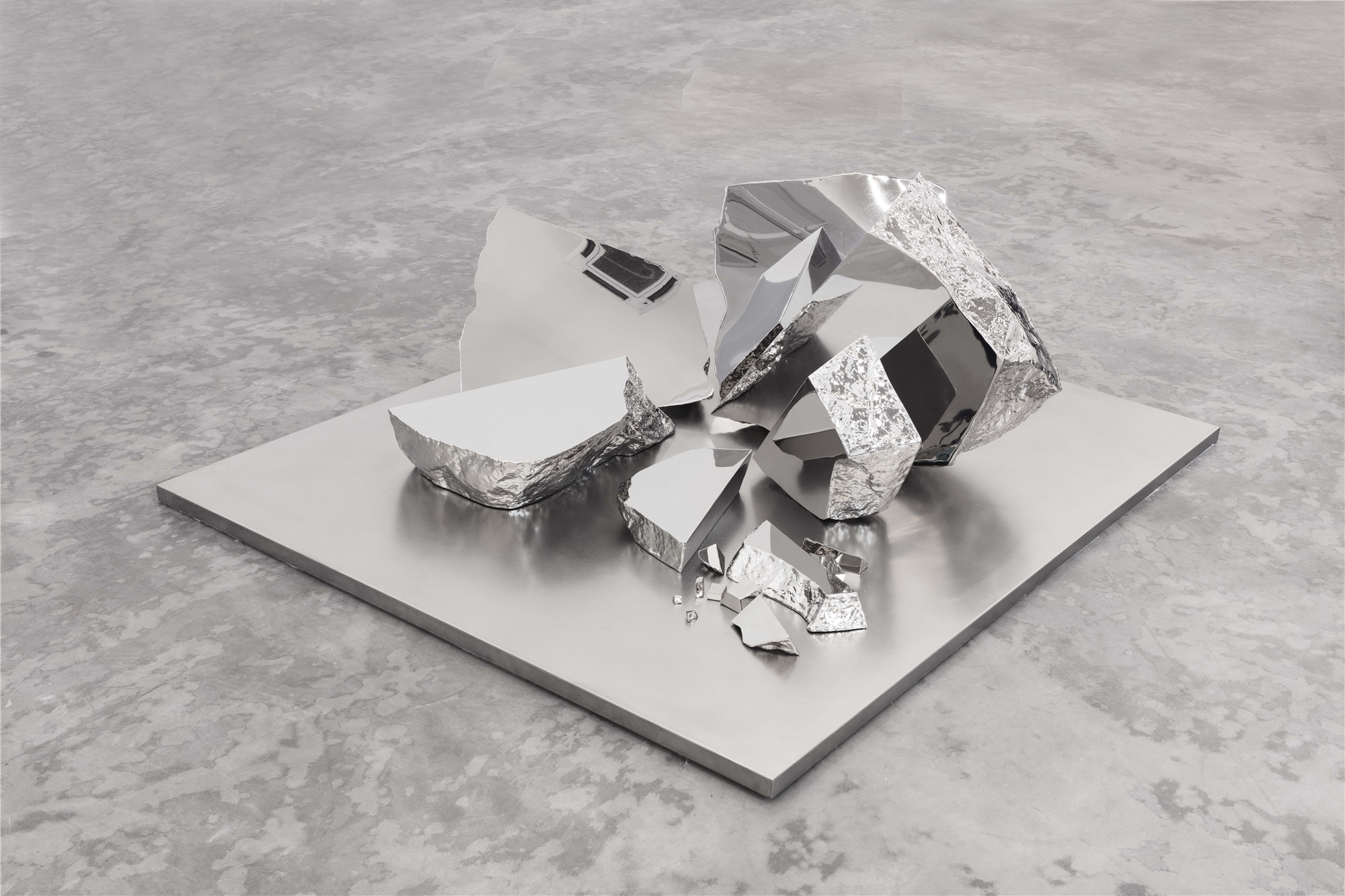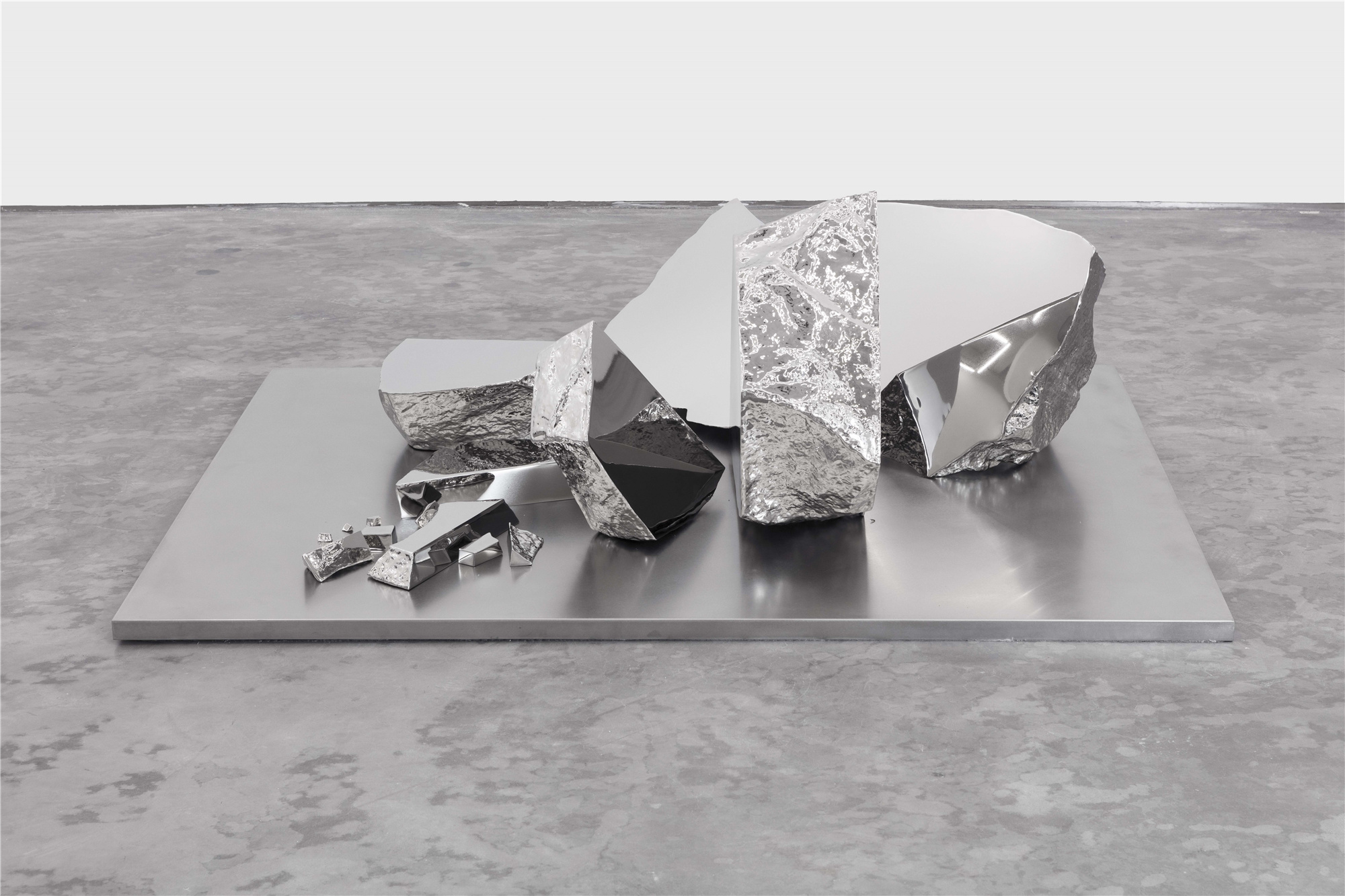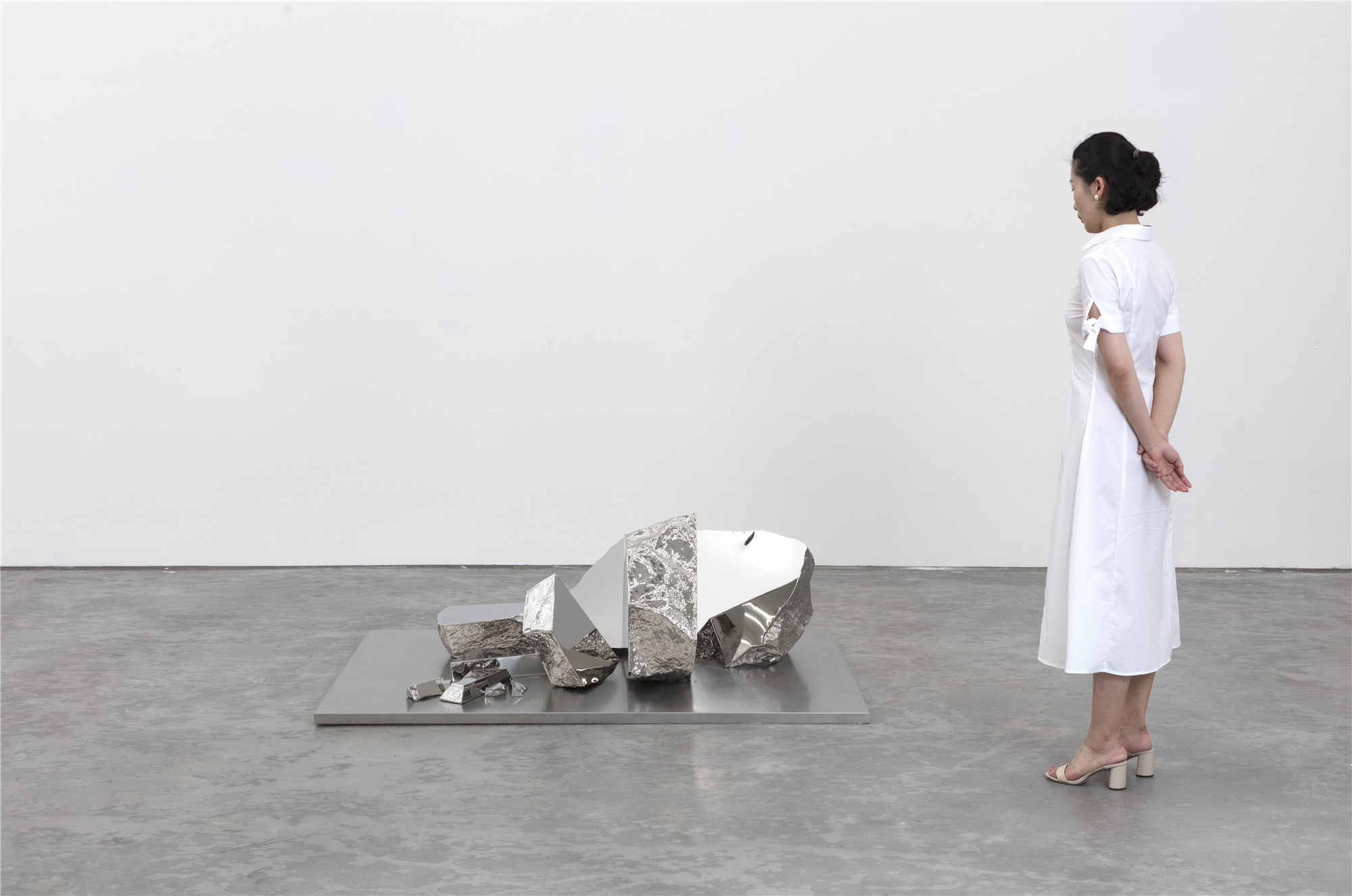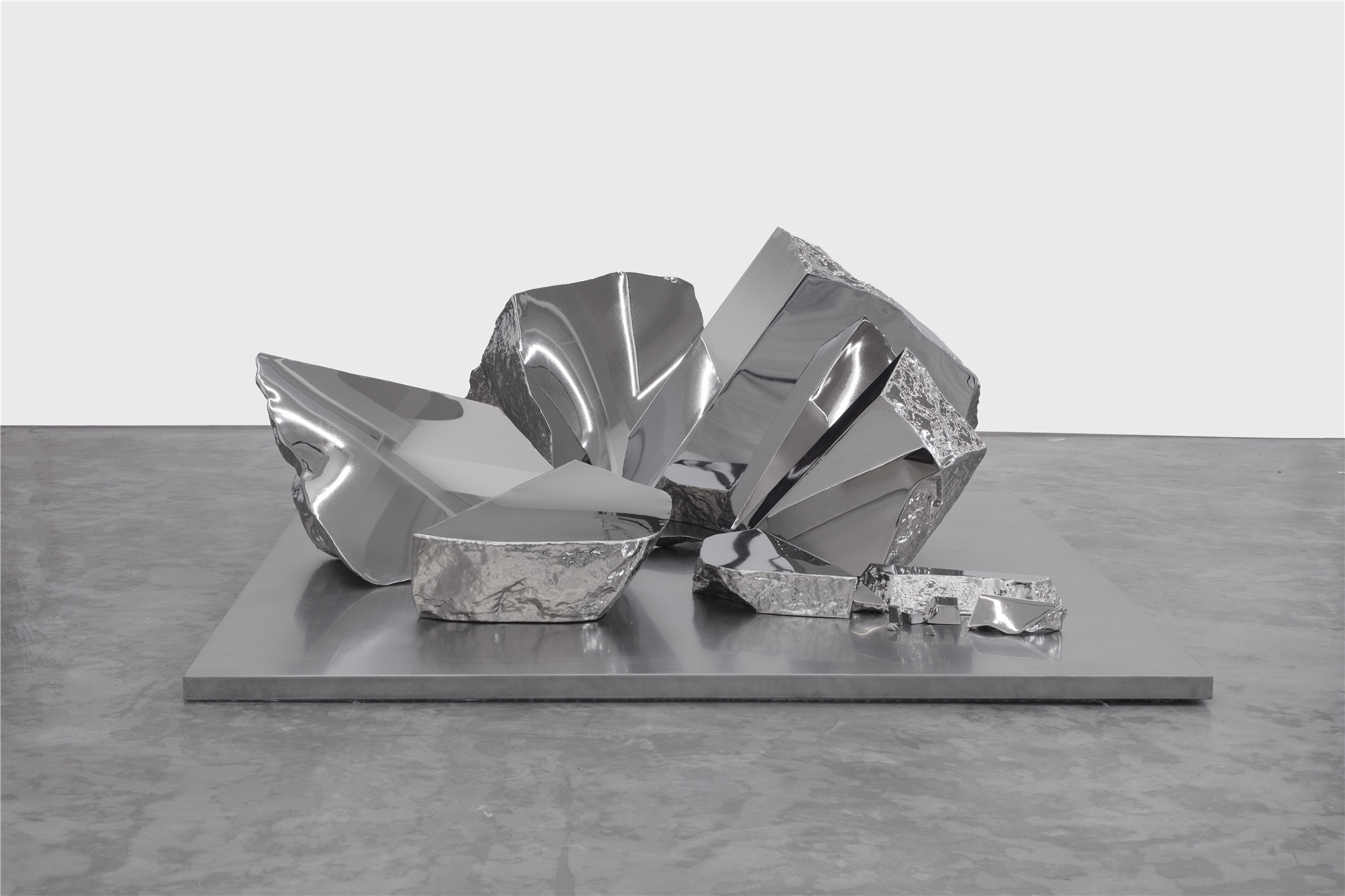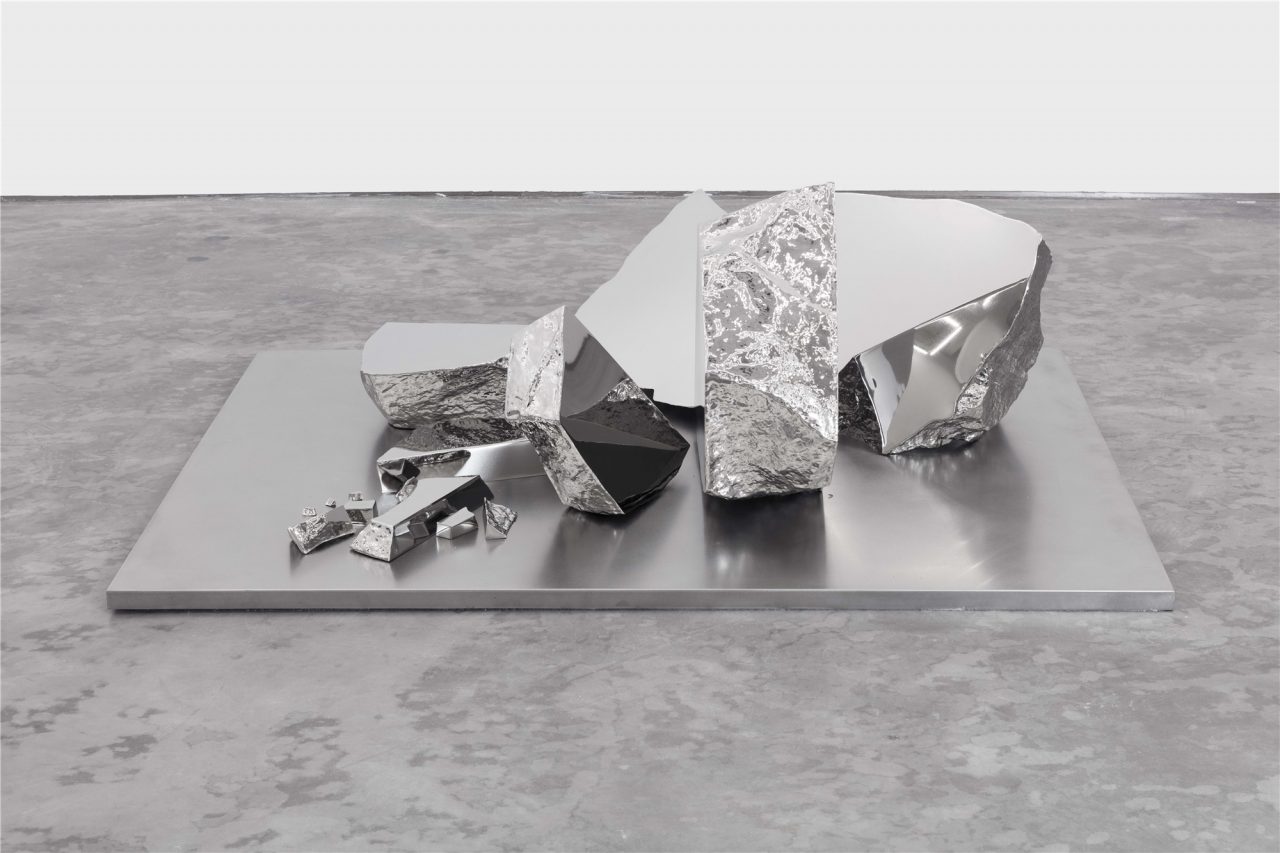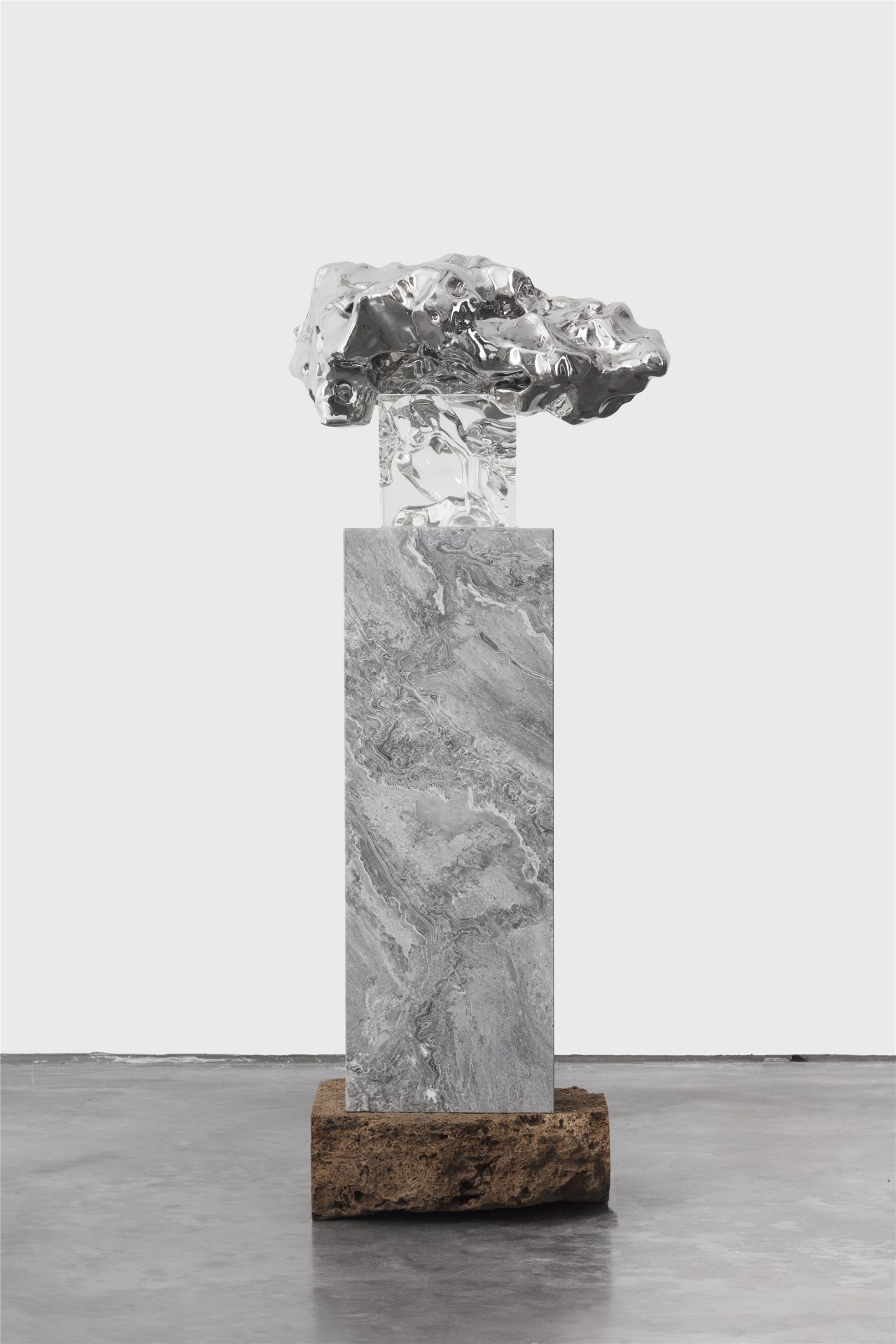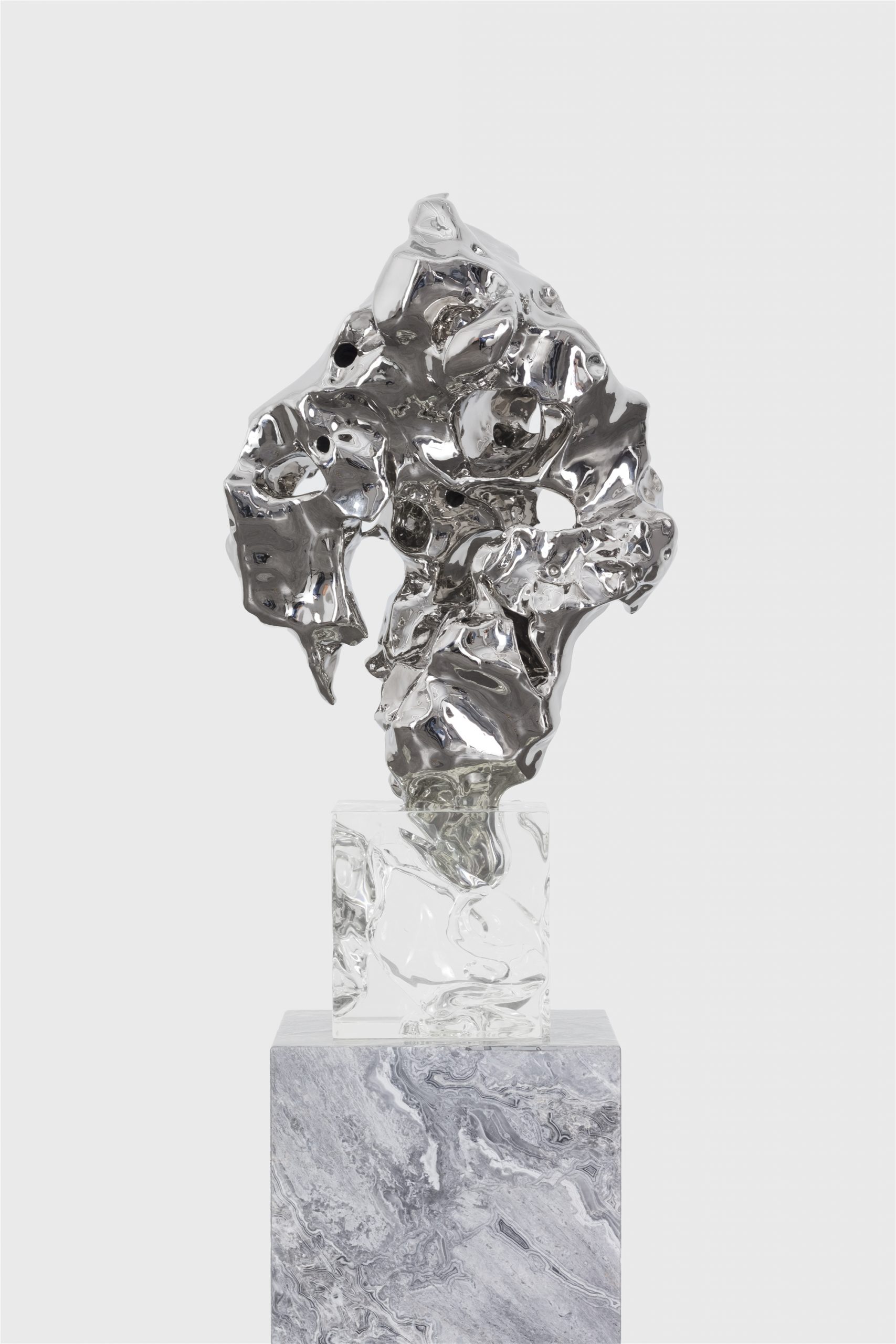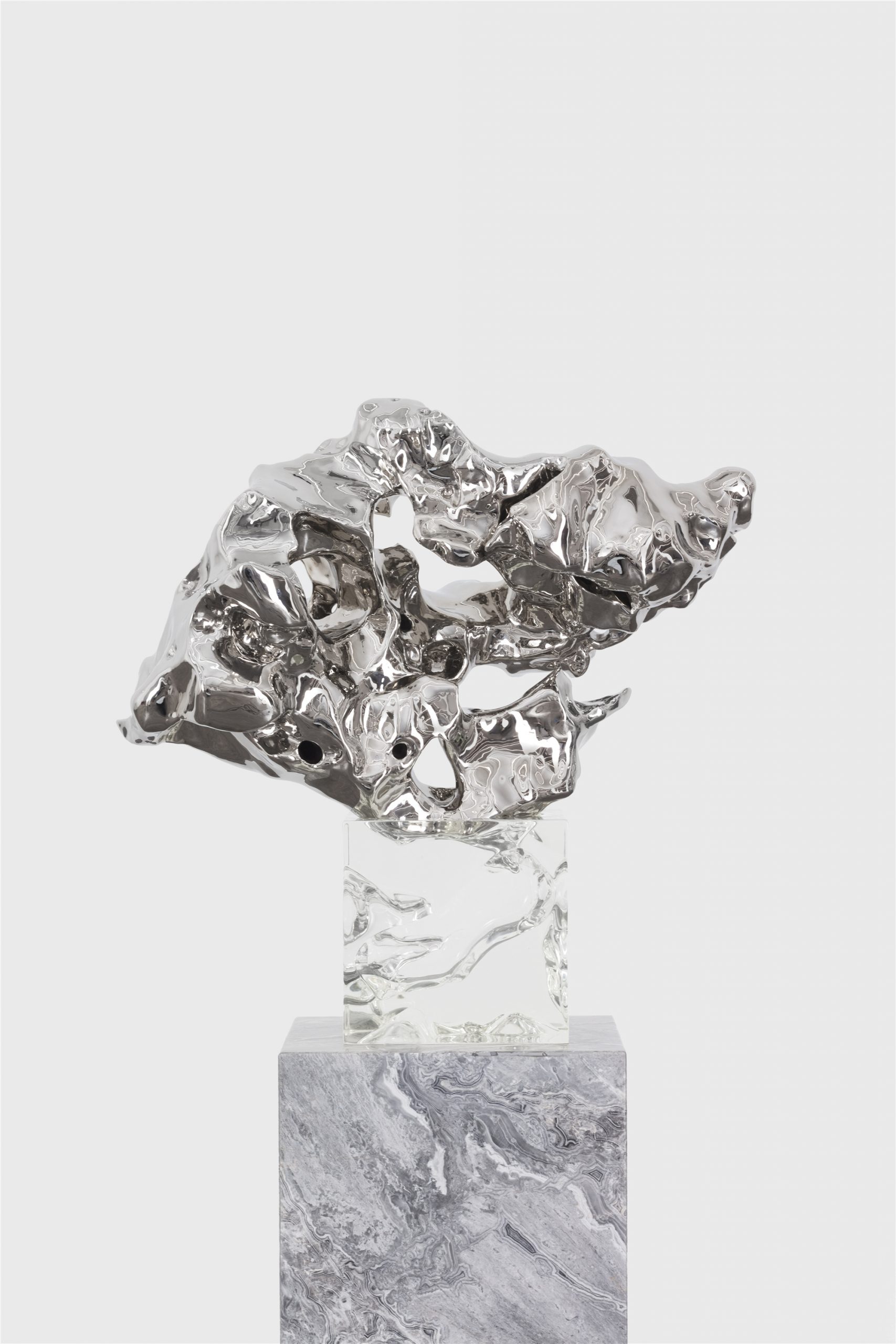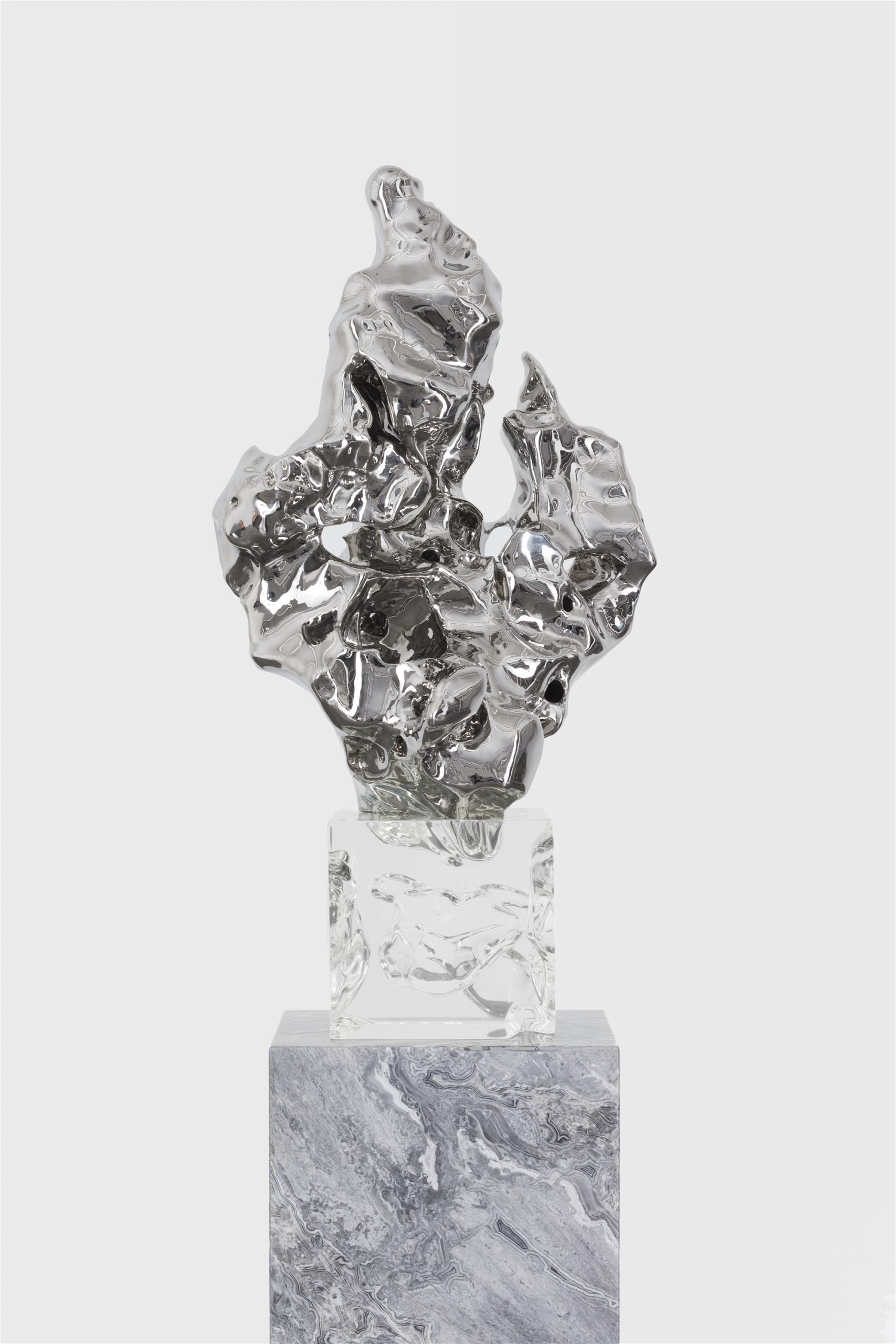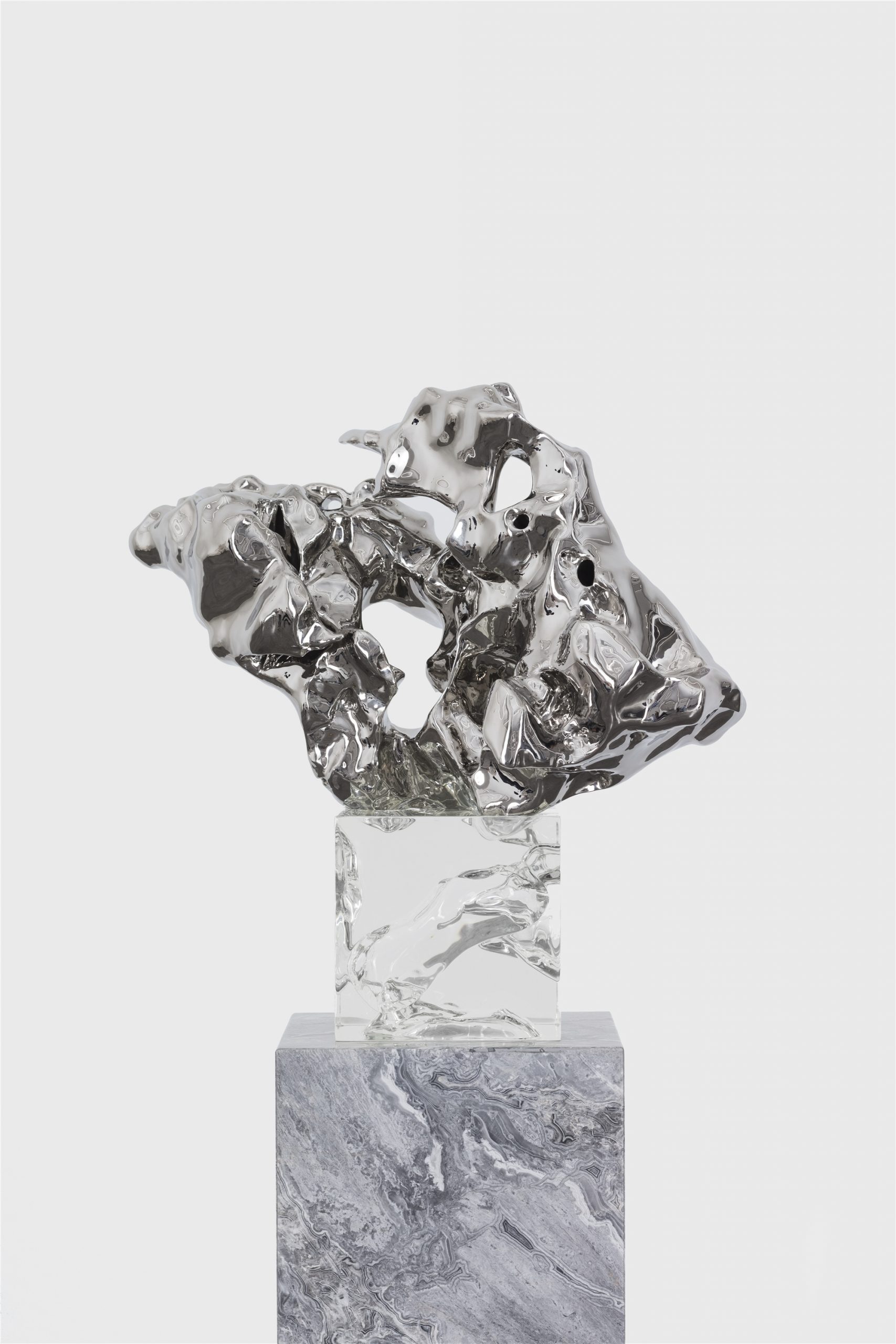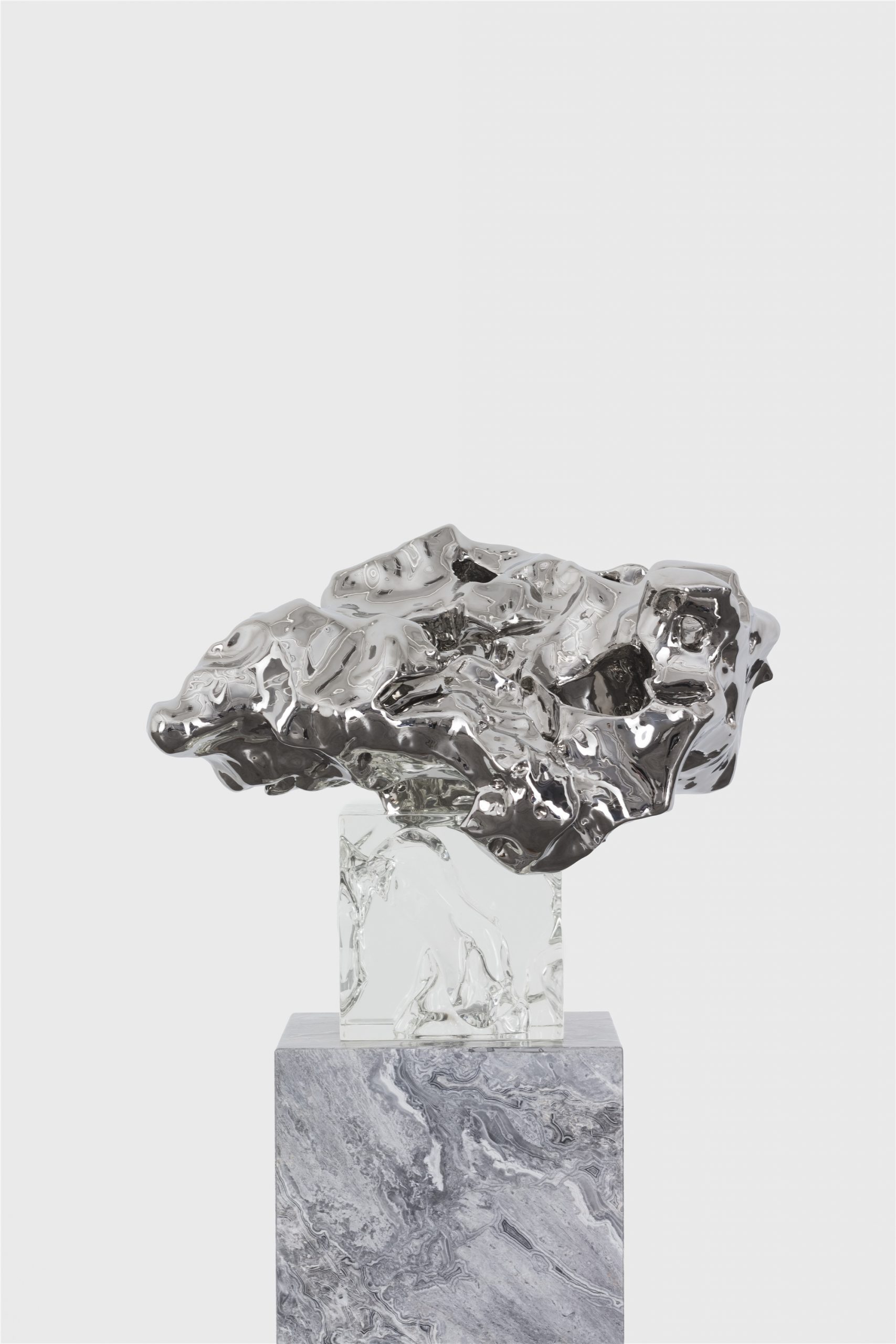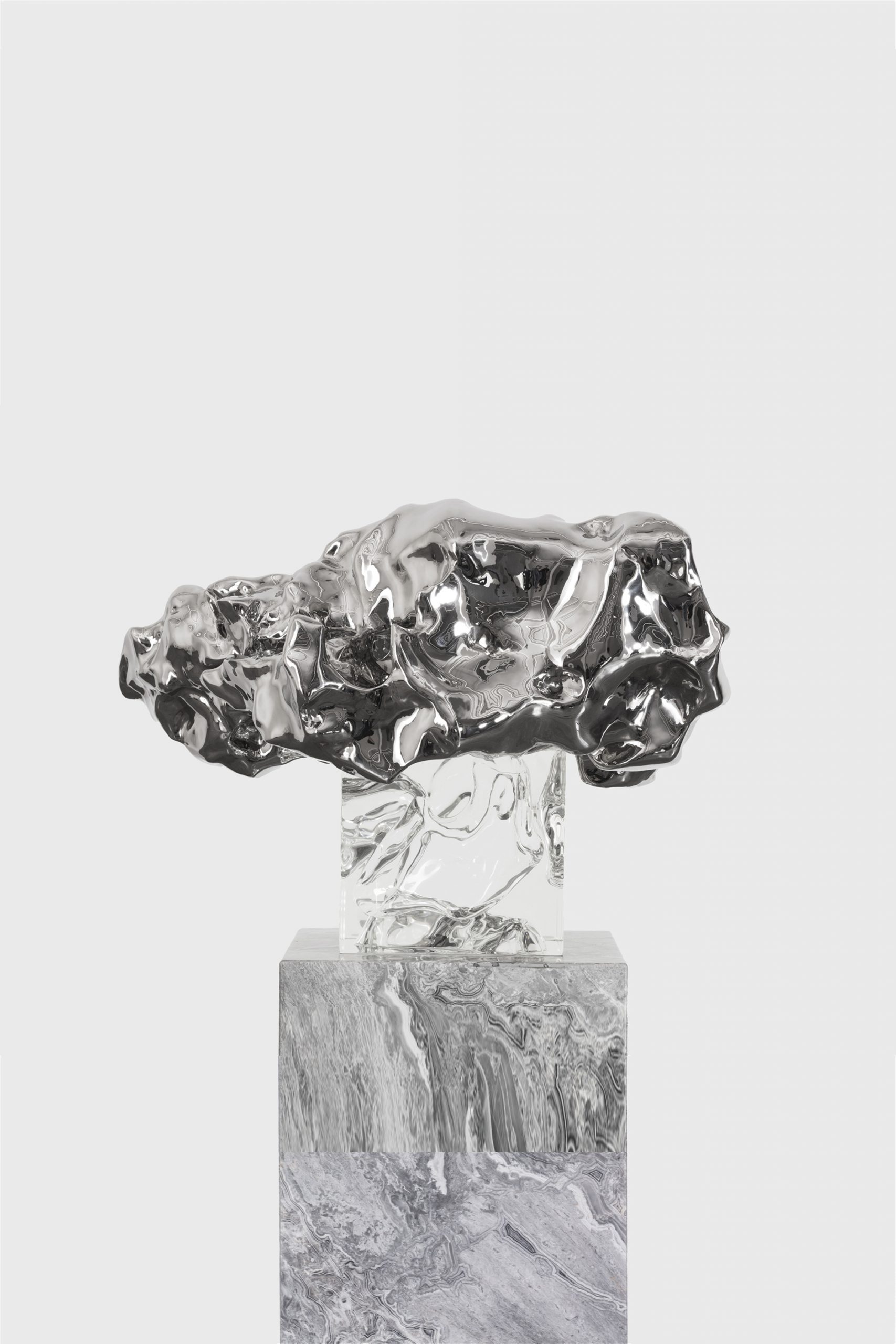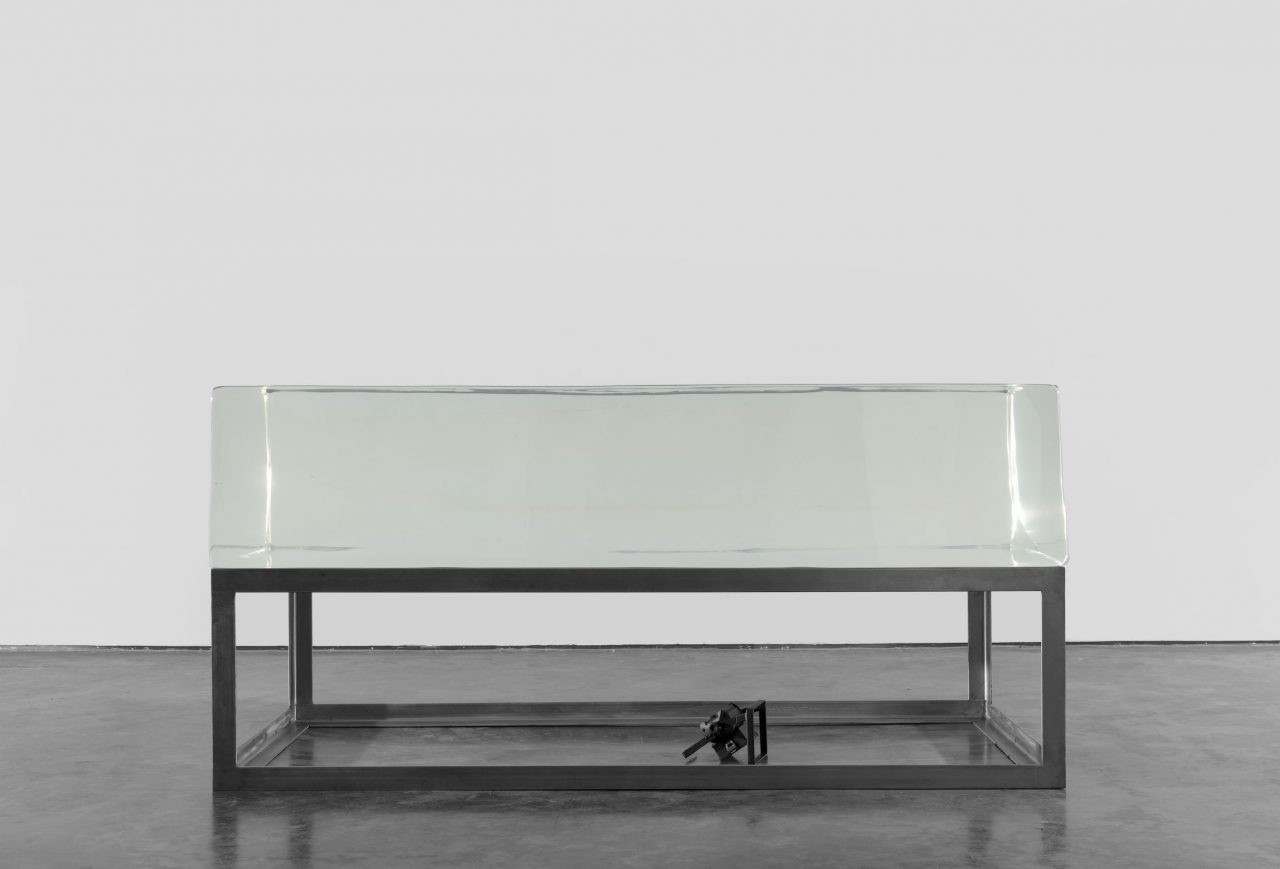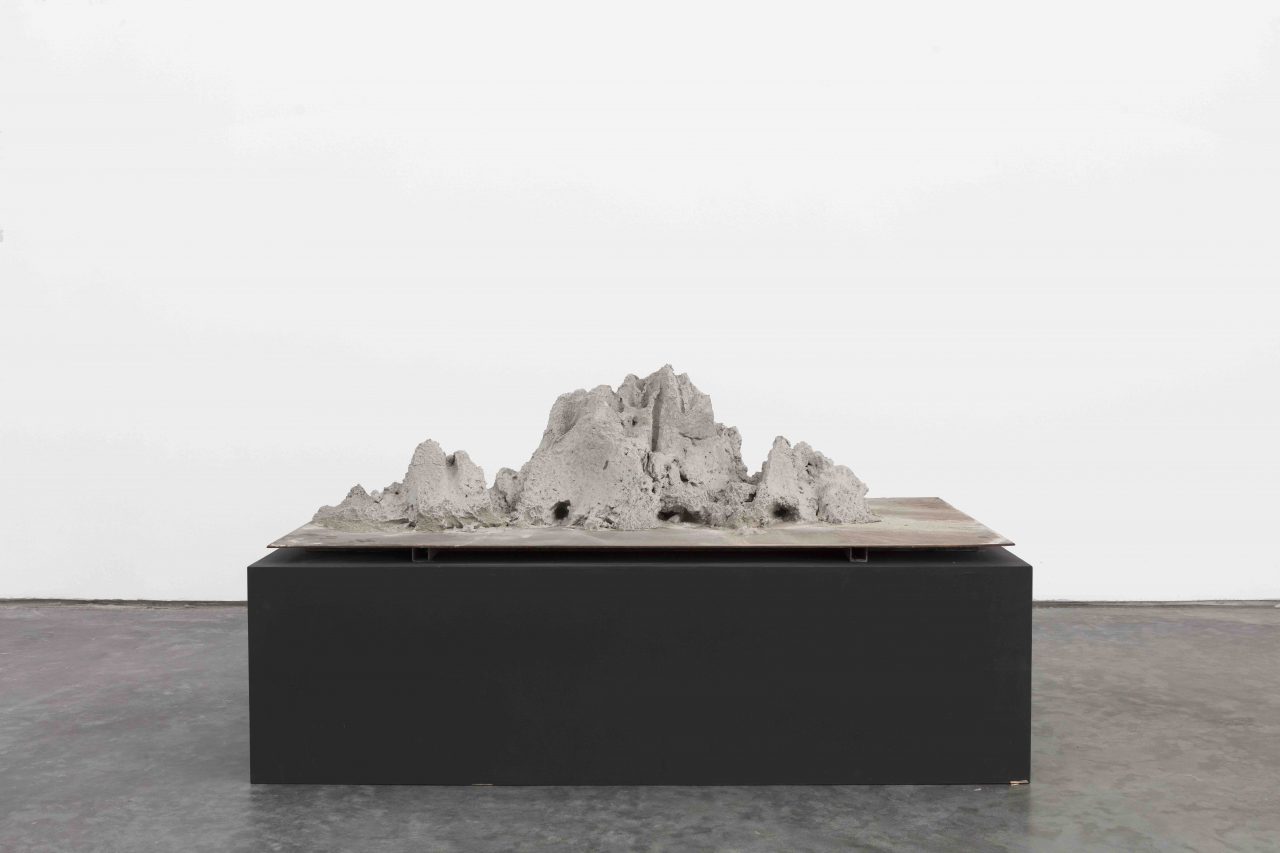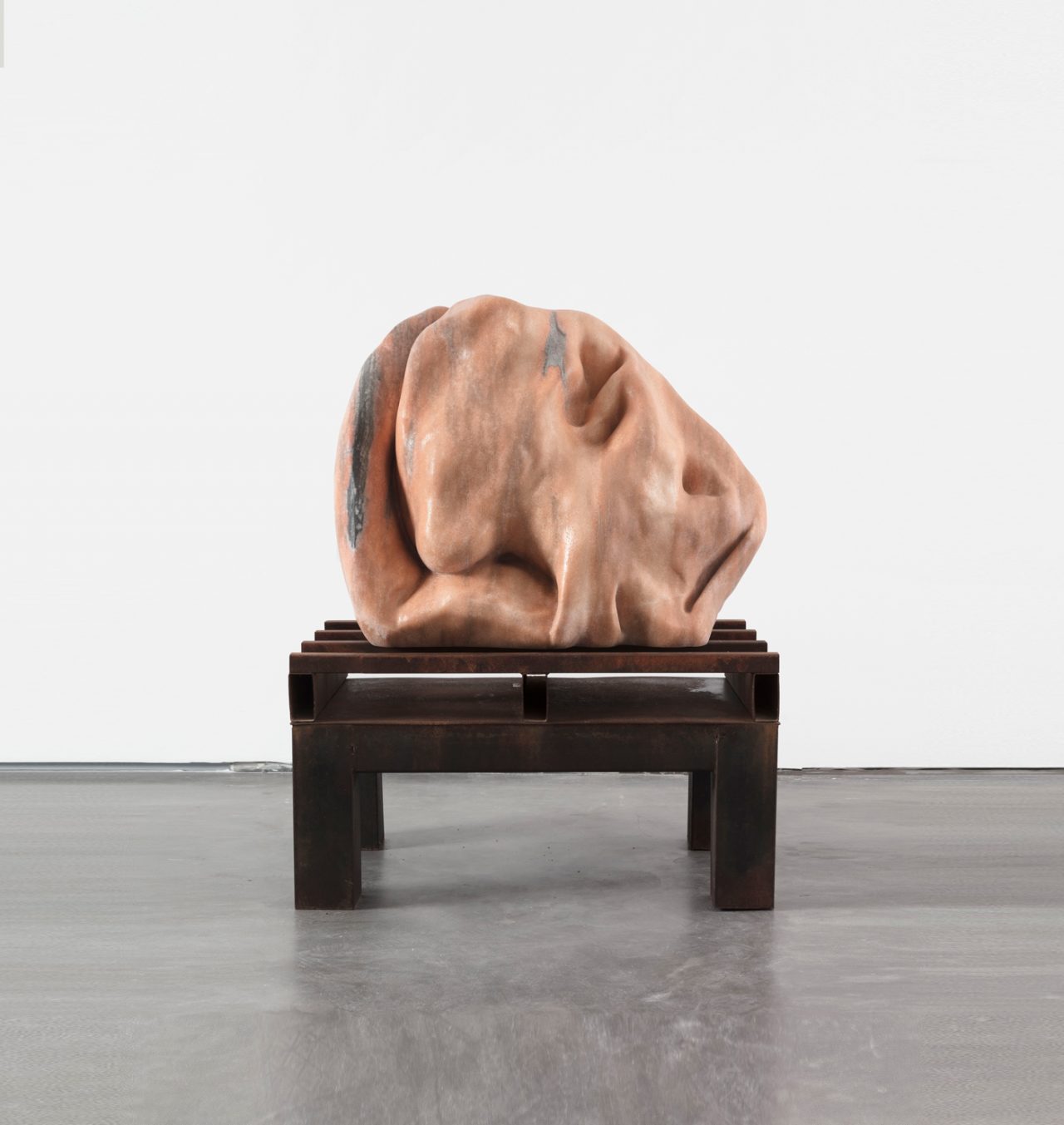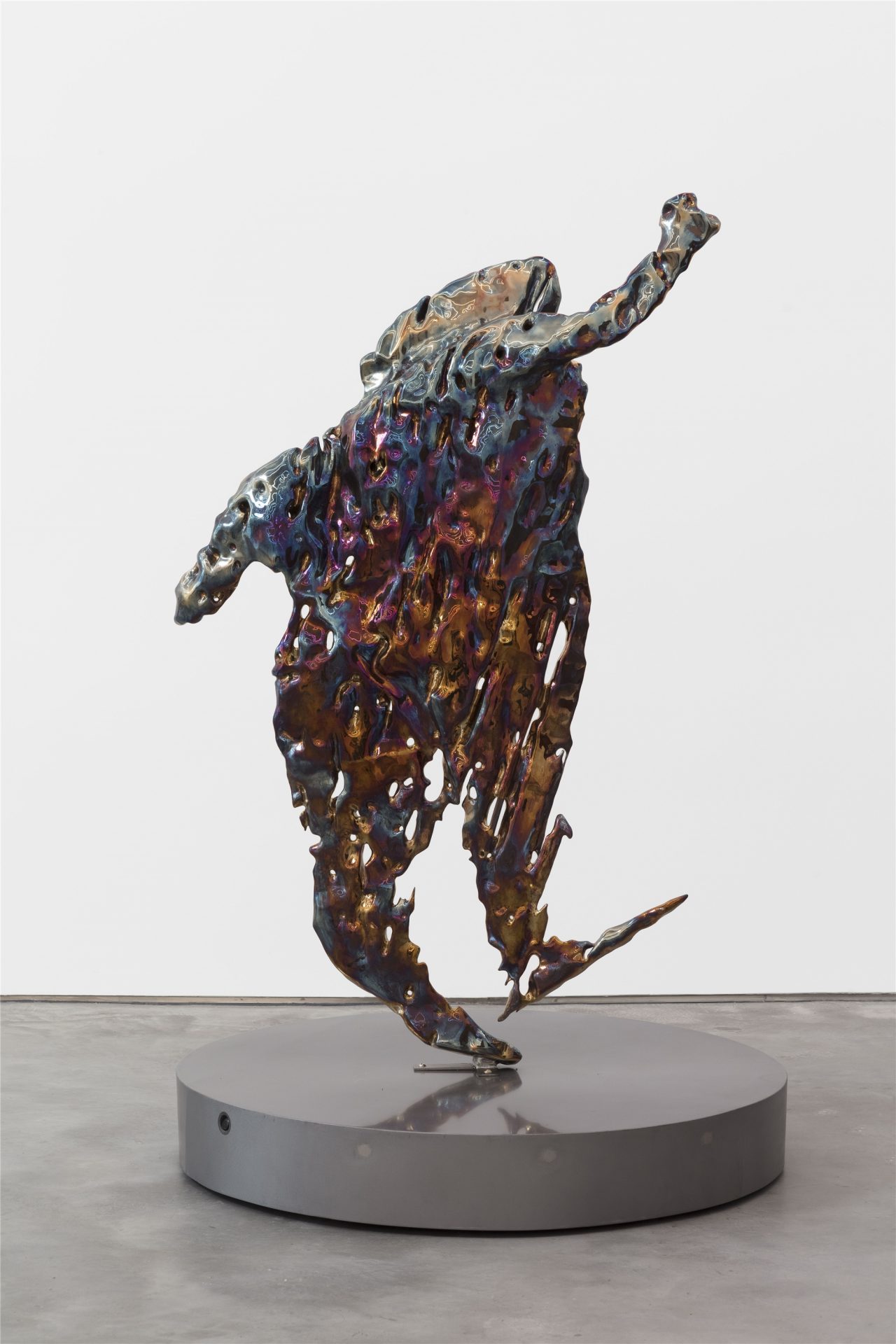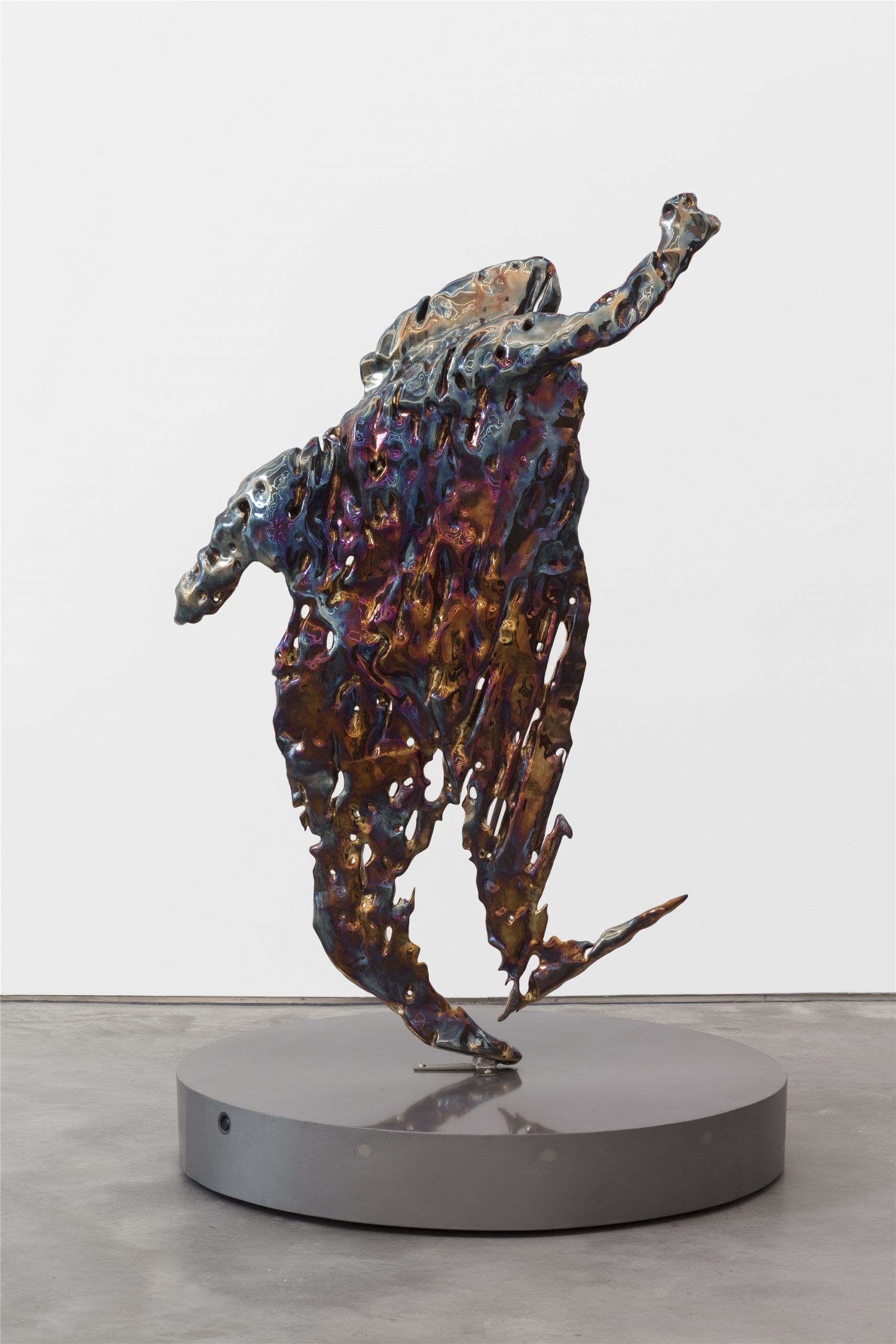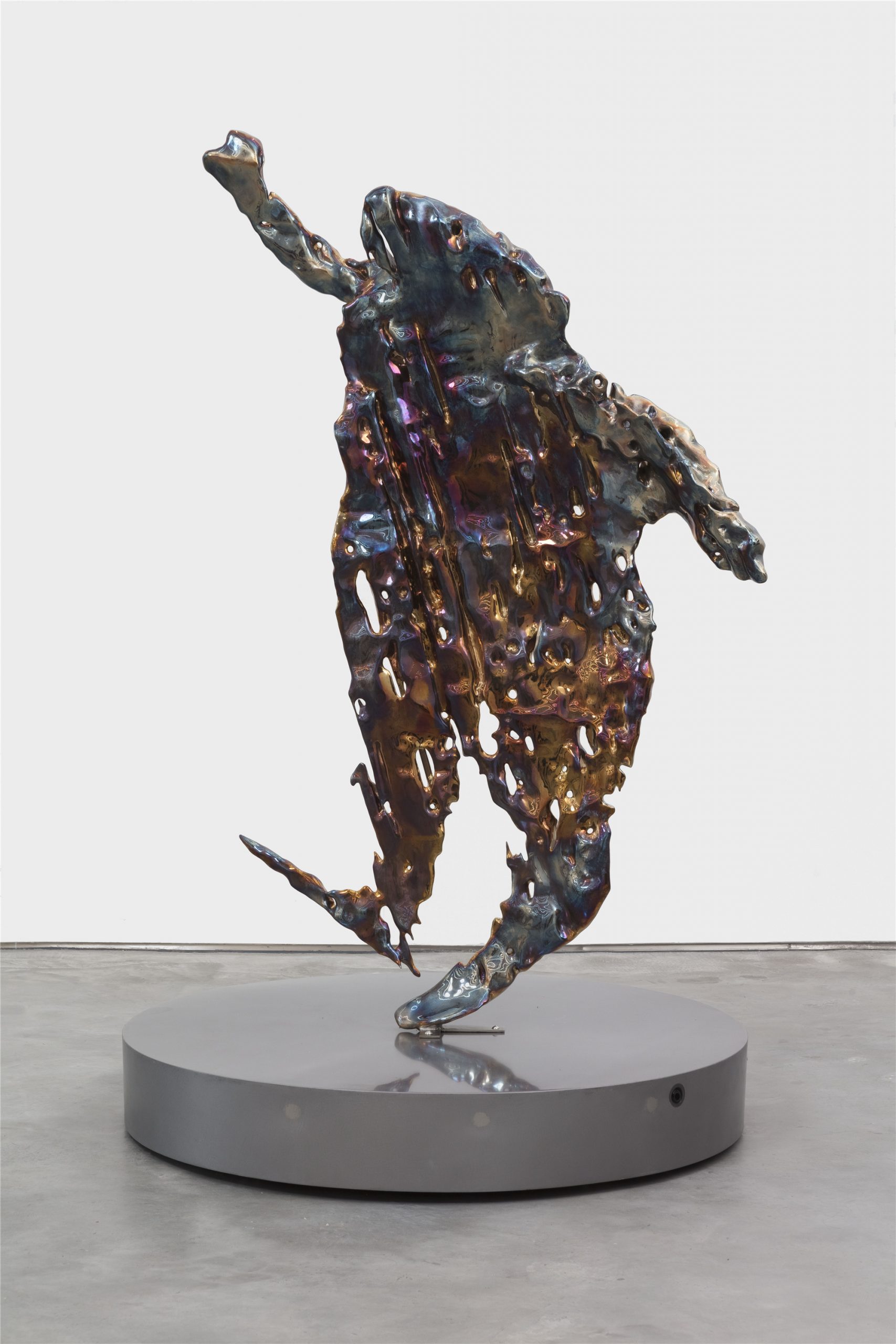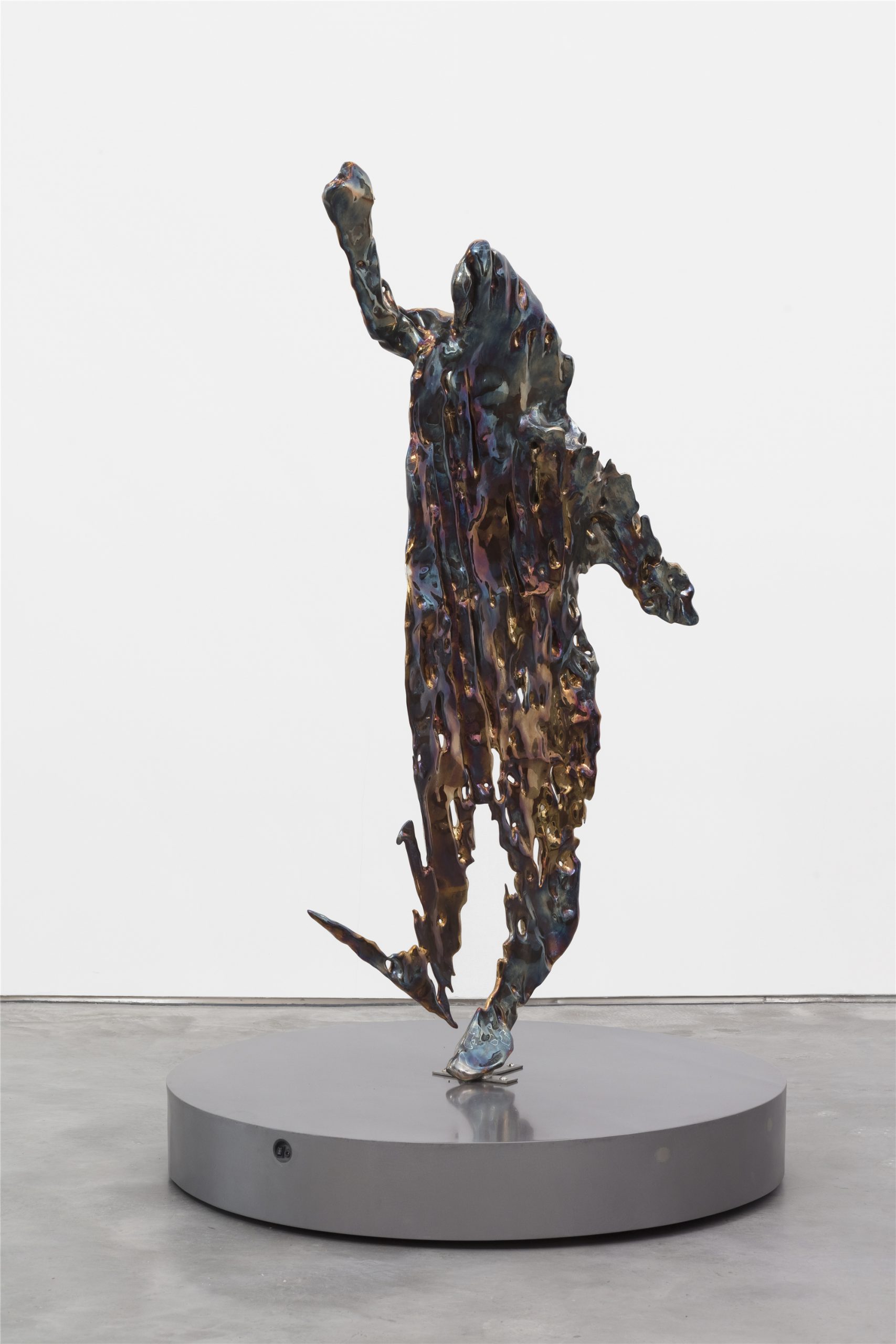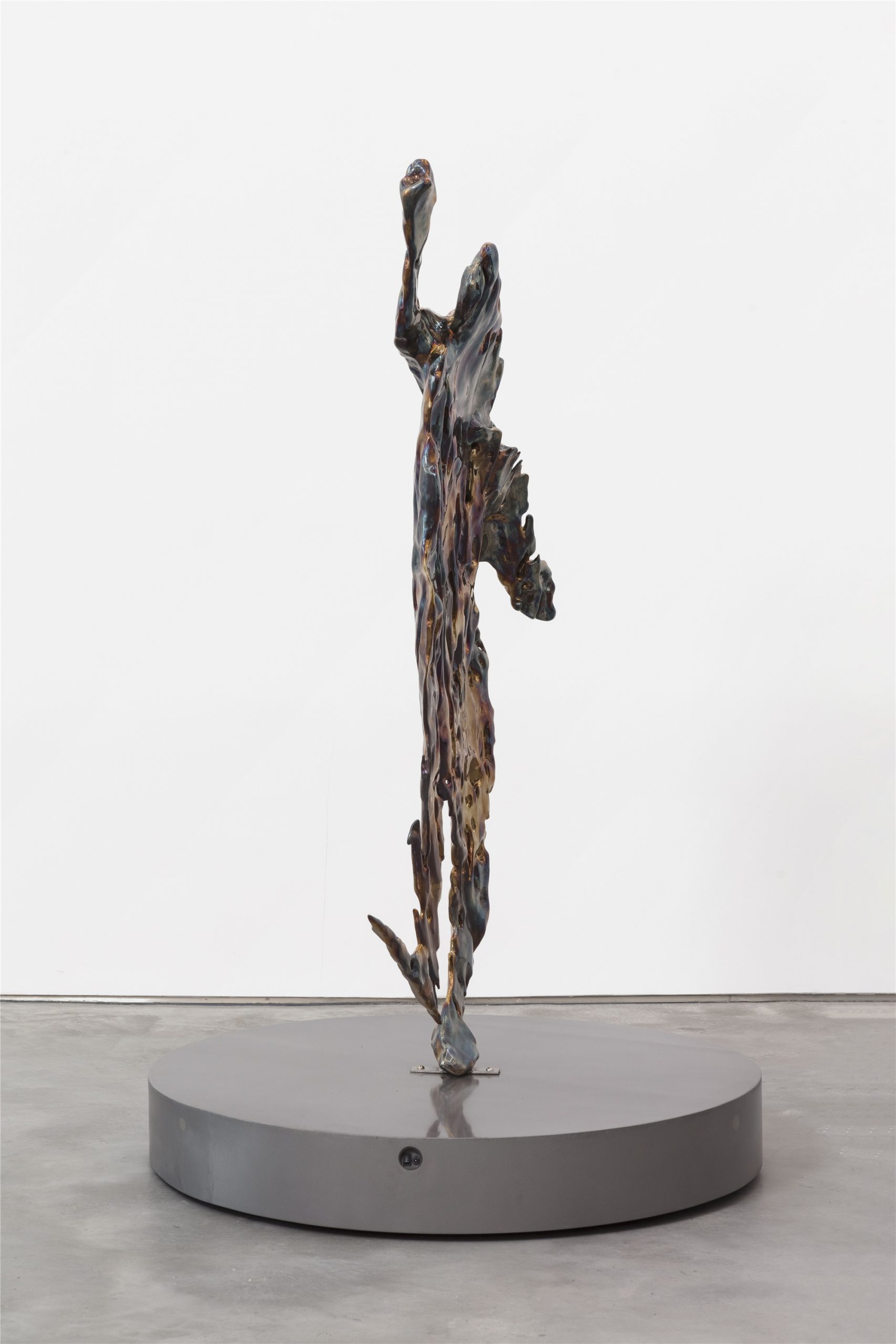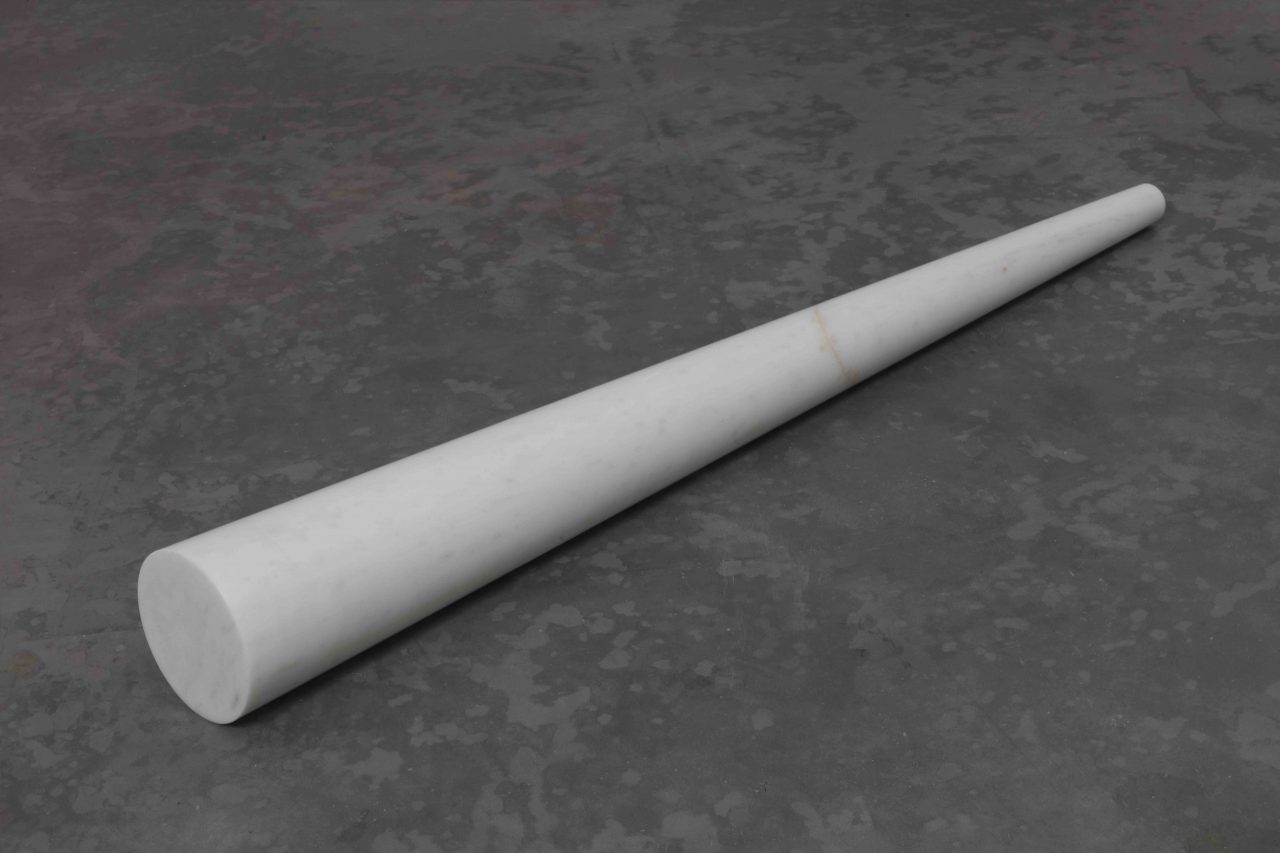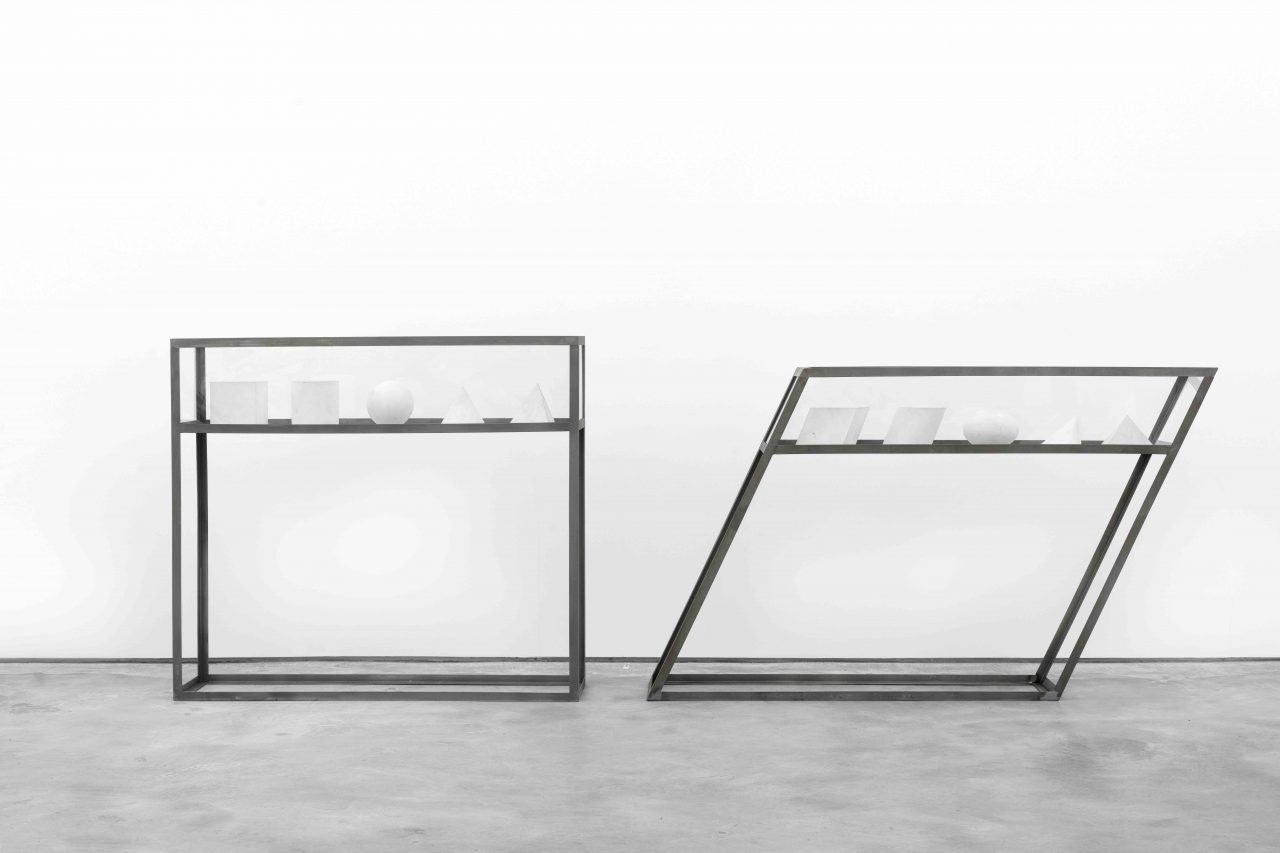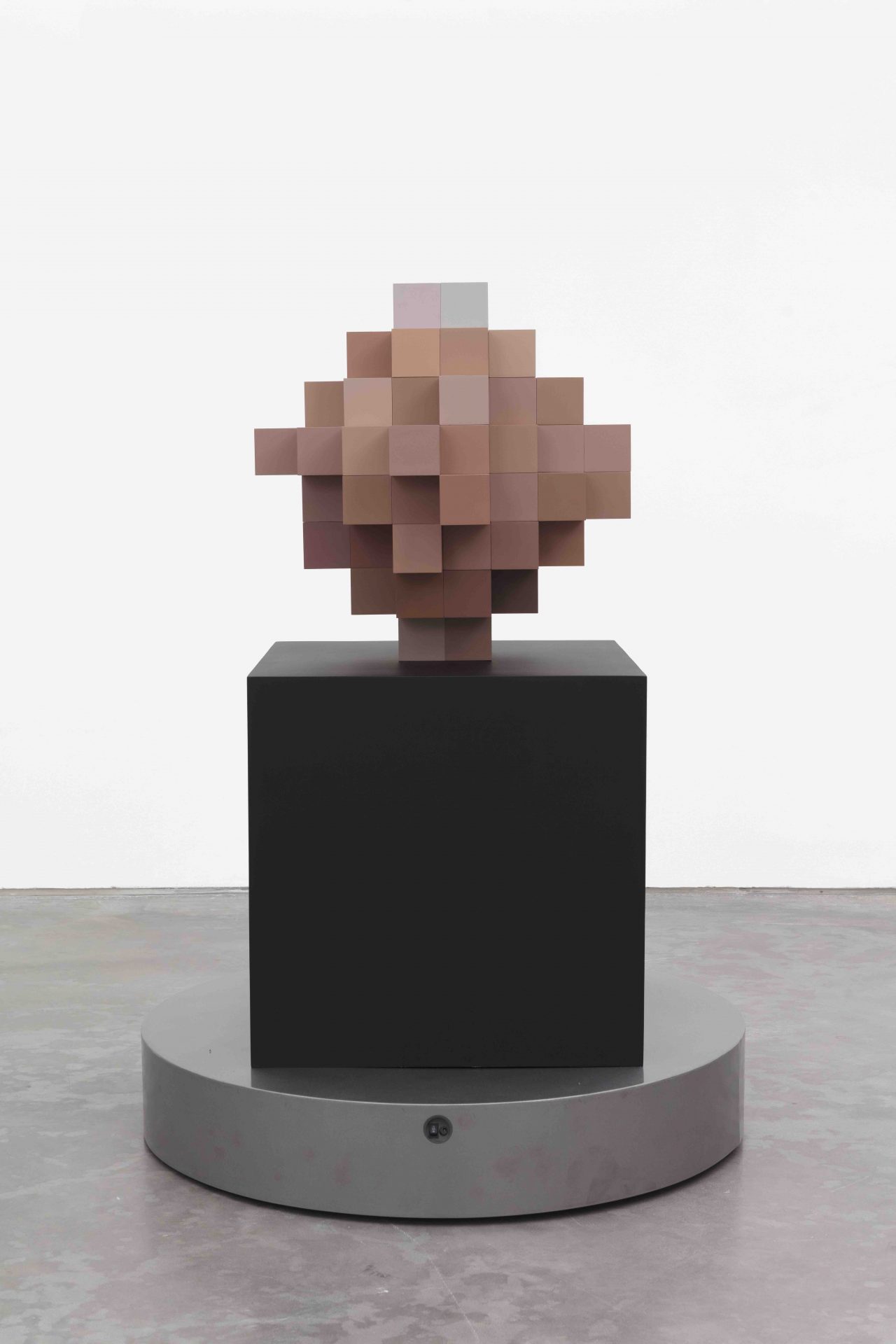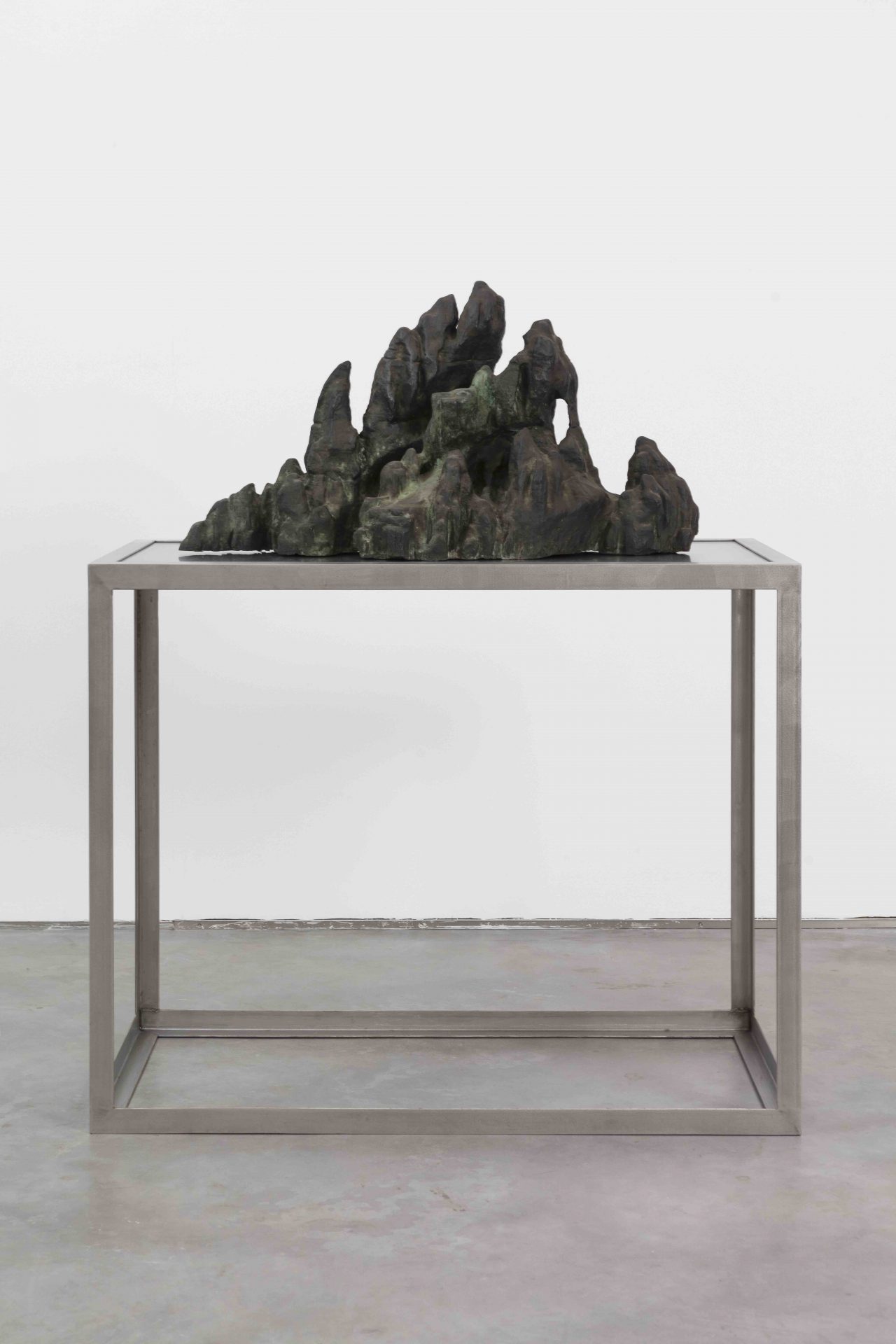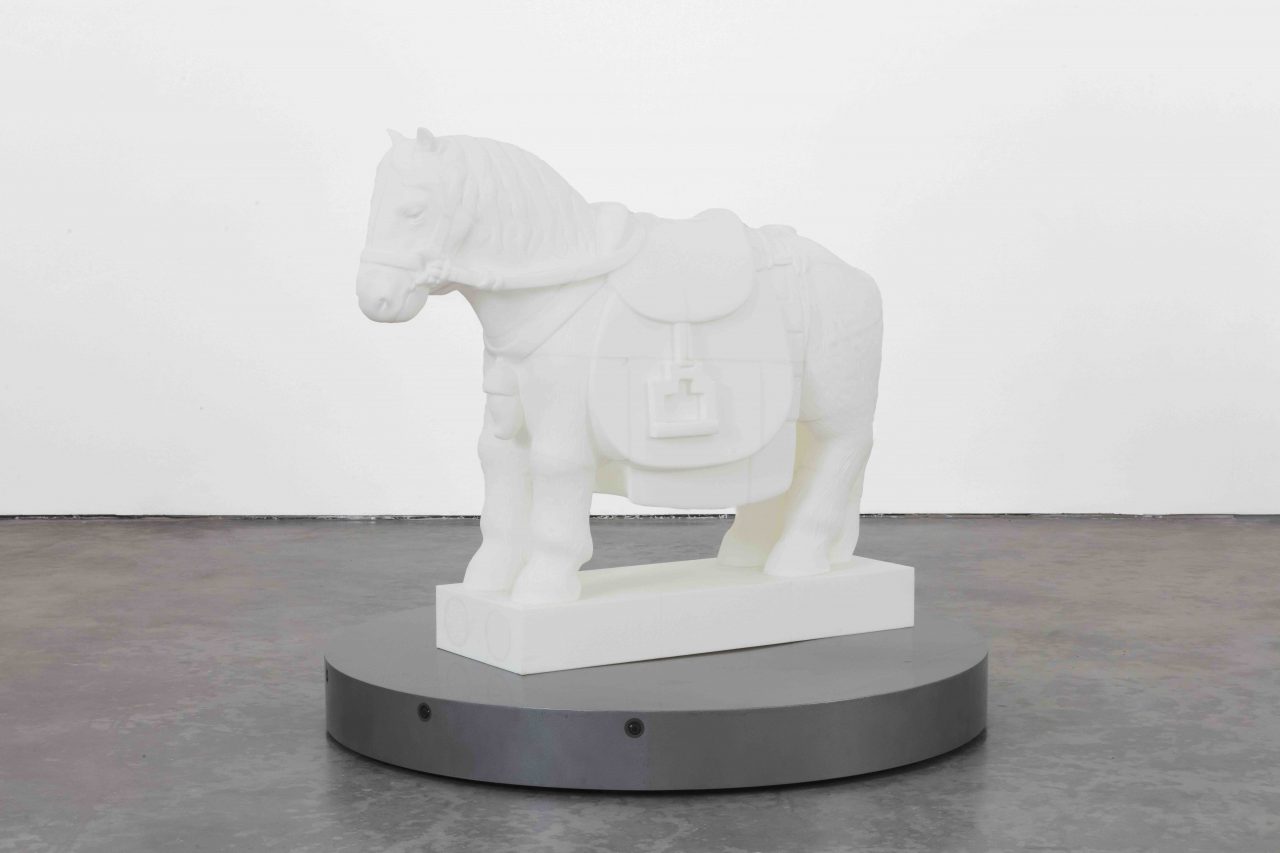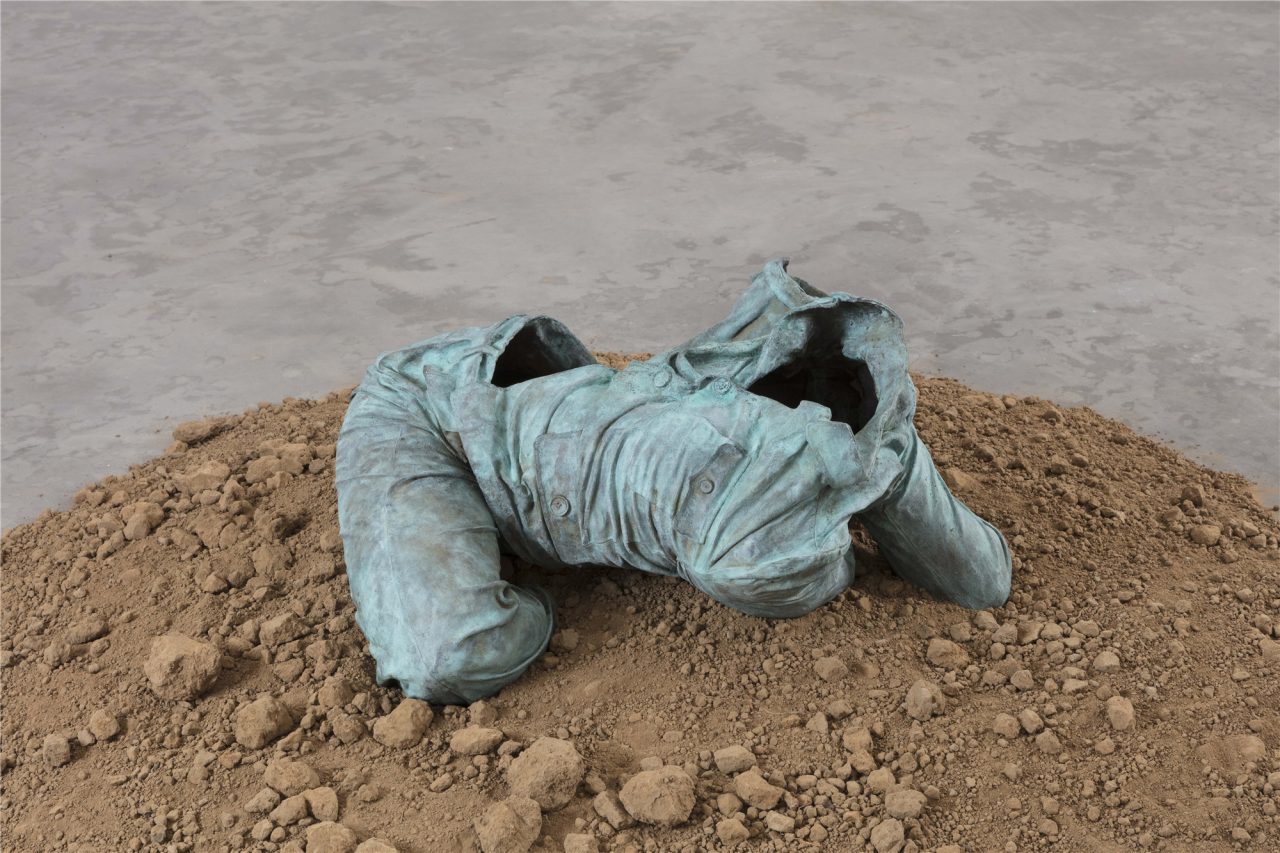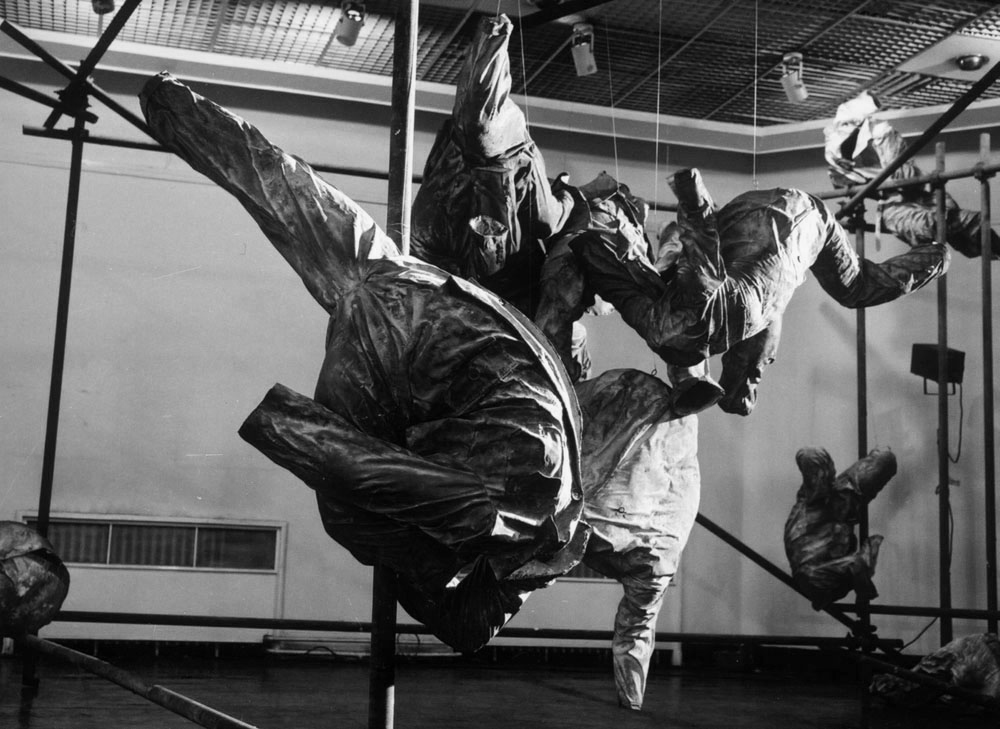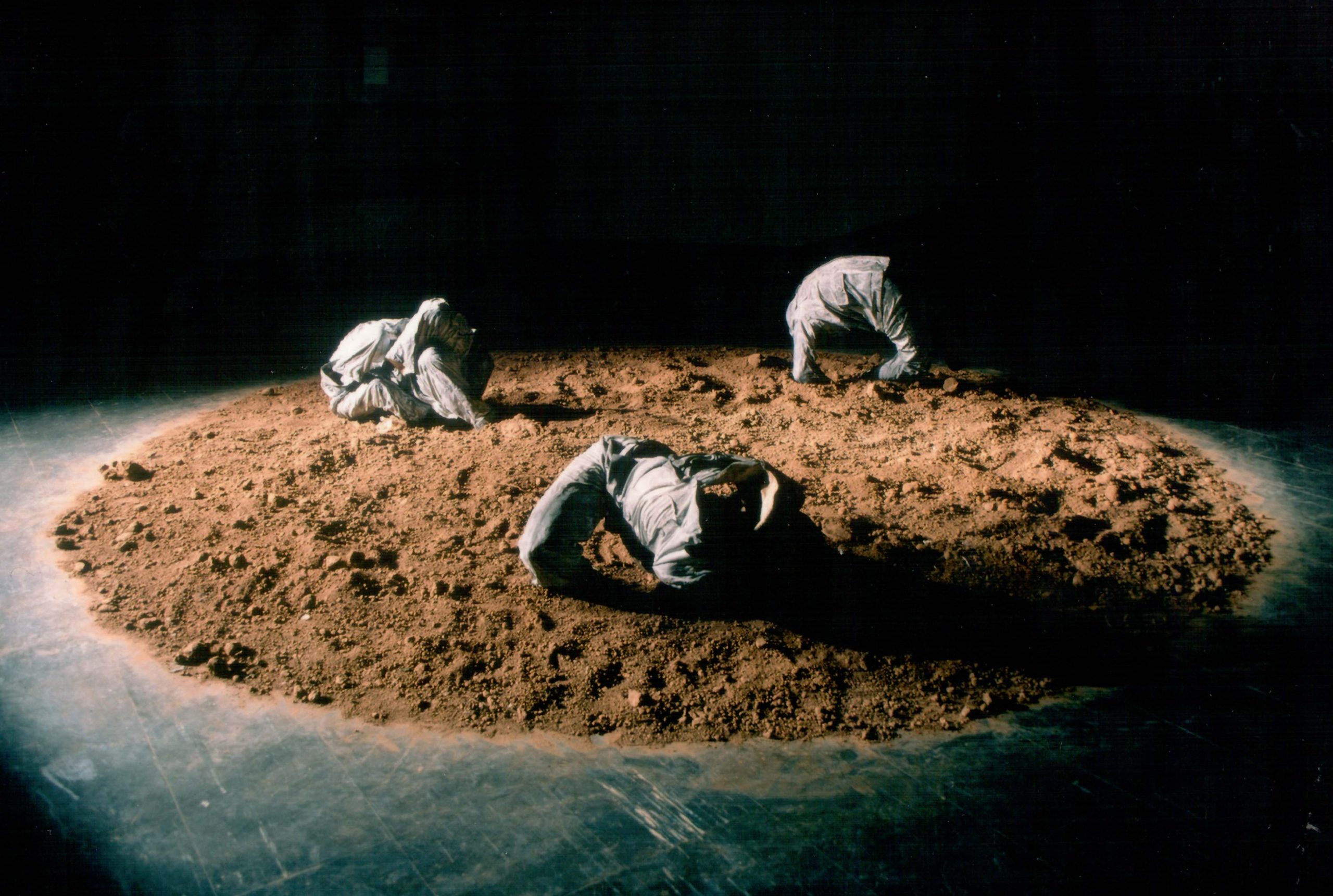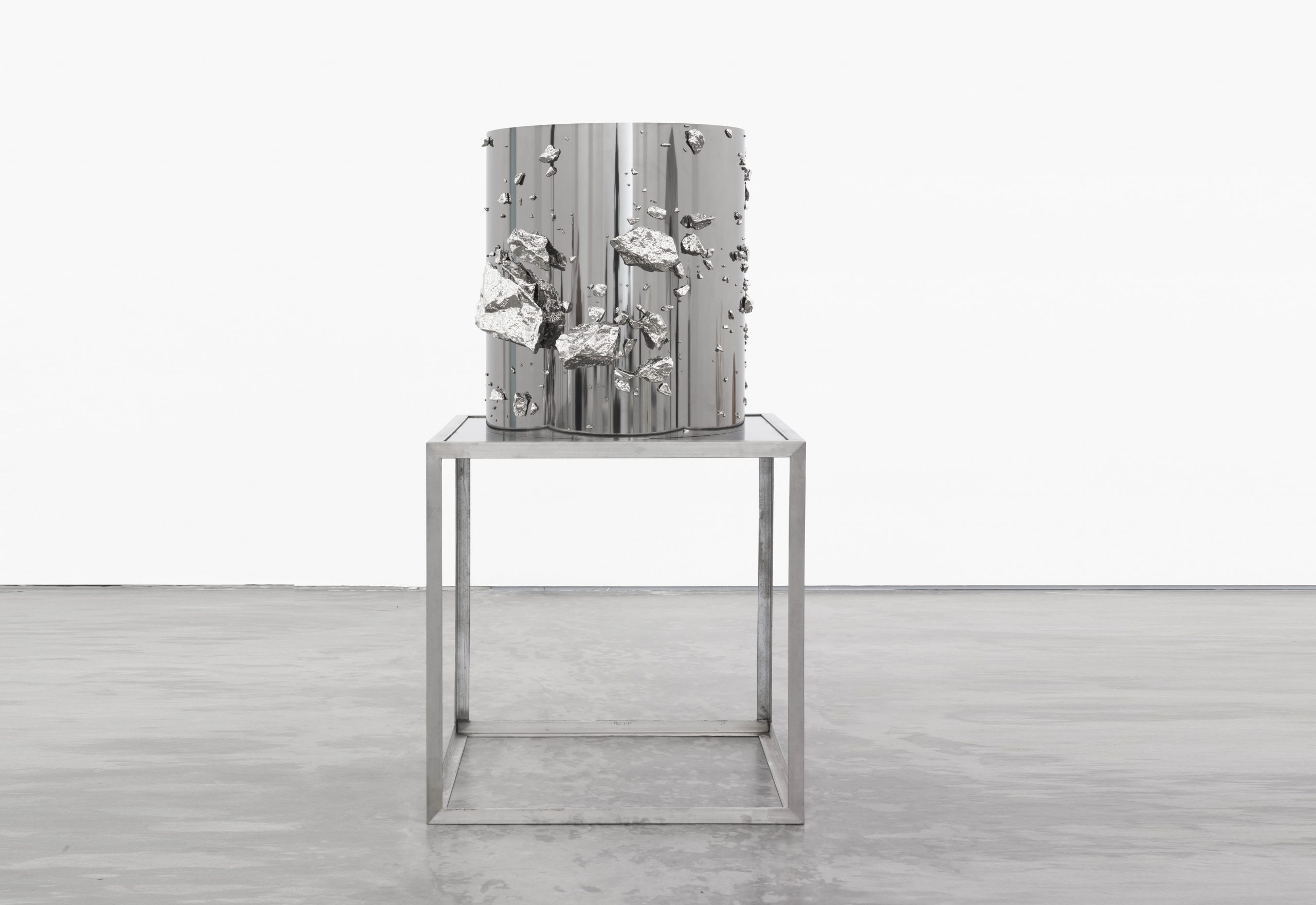Zhan Wang: Objects of Idea
Long March Space is pleased to present “Zhan Wang: Objects of Idea”. The online viewing room will be launched from 23 July 14:00 to 31 July 24:00 (CST). The online viewing room will present the entire 23 artworks in this solo exhibition, showing the artist’s diverse explorations in material, technique and language throughout his creative career, and his methodology for integrating conception with production.
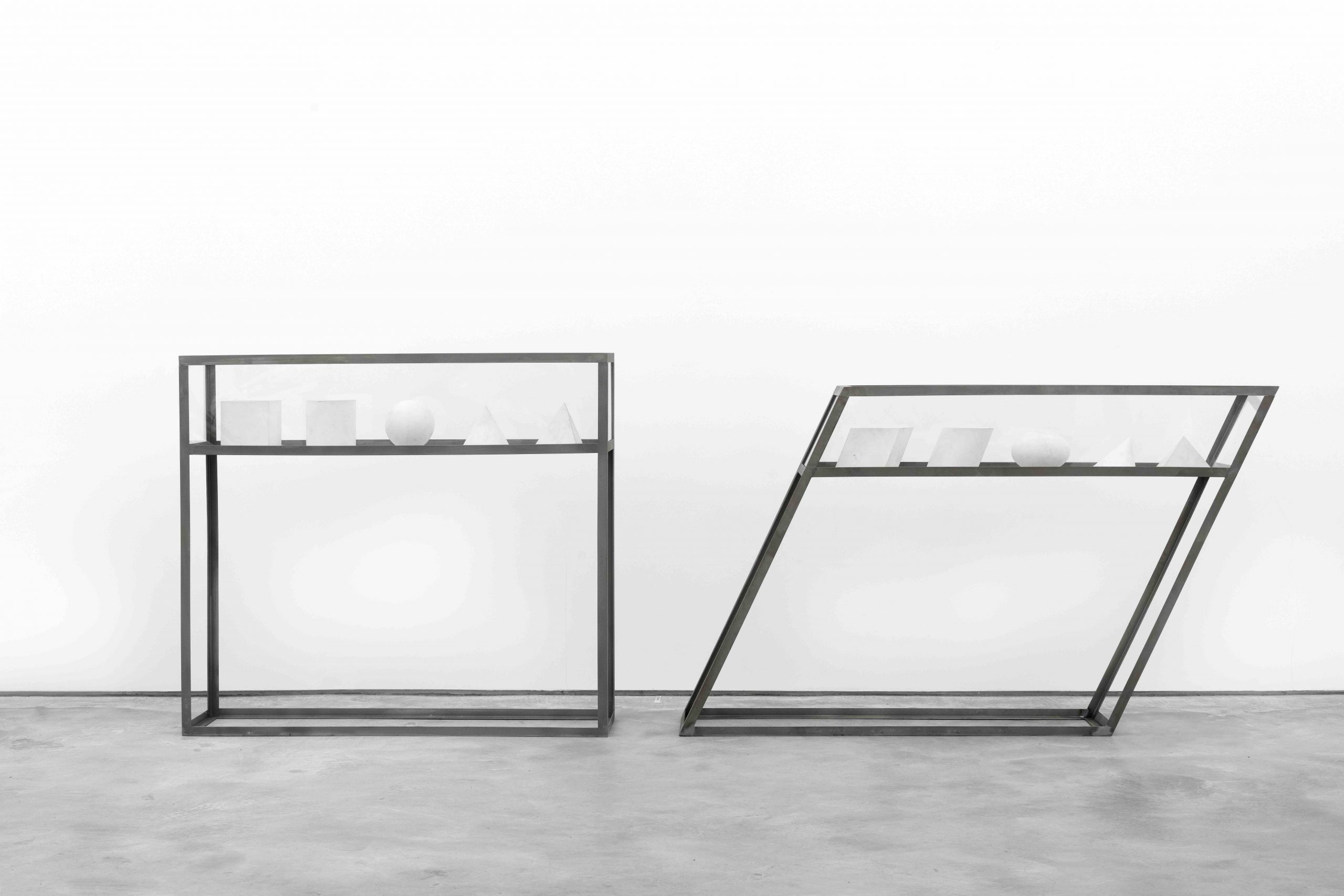
As a representative figure to experimental sculpture construction in Chinese contemporary art, Zhan Wang specializes in applying simple material forms to create aesthetic situations that suggest “the communication between mind and matter.” In Imprinting Terrain, Zhan Wang continues to employ the technique implying traditional craftsmanship – manual rubbing, but has removed from the subjective body of “Taihu Stone” as the incarnation of his literati interest and directly connects himself to the lived environment instead. He uses the very thin stainless steel plate with a thickness of 5 millimeters to cover one square meter of original land, then by repeated beatings to give detail to its surface texture. The power of abstracting real property into “unreal/fake” property is namely this: the separation of land the thing immovably attached to the land by some individual agency indeed liberates a shared object of social exchange from public ownership.
This work was originally made in my studio in Beijing’s Tongzhou District. At the end of 2015, my studio relocated from Tongzhou District to Shunyi District. For my farewell piece, I replicated a piece of Tongzhou land using the stone-rubbing technique. The price for the piece ofland was the mean value of the residential properties sold in Tongzhou from 2015 to 2018, which was 41,314.39 RMB (per square meter).According to the per capita living area in Beijing—which was 32 square meters—I made and sold 32 pieces of Tongzhou land.
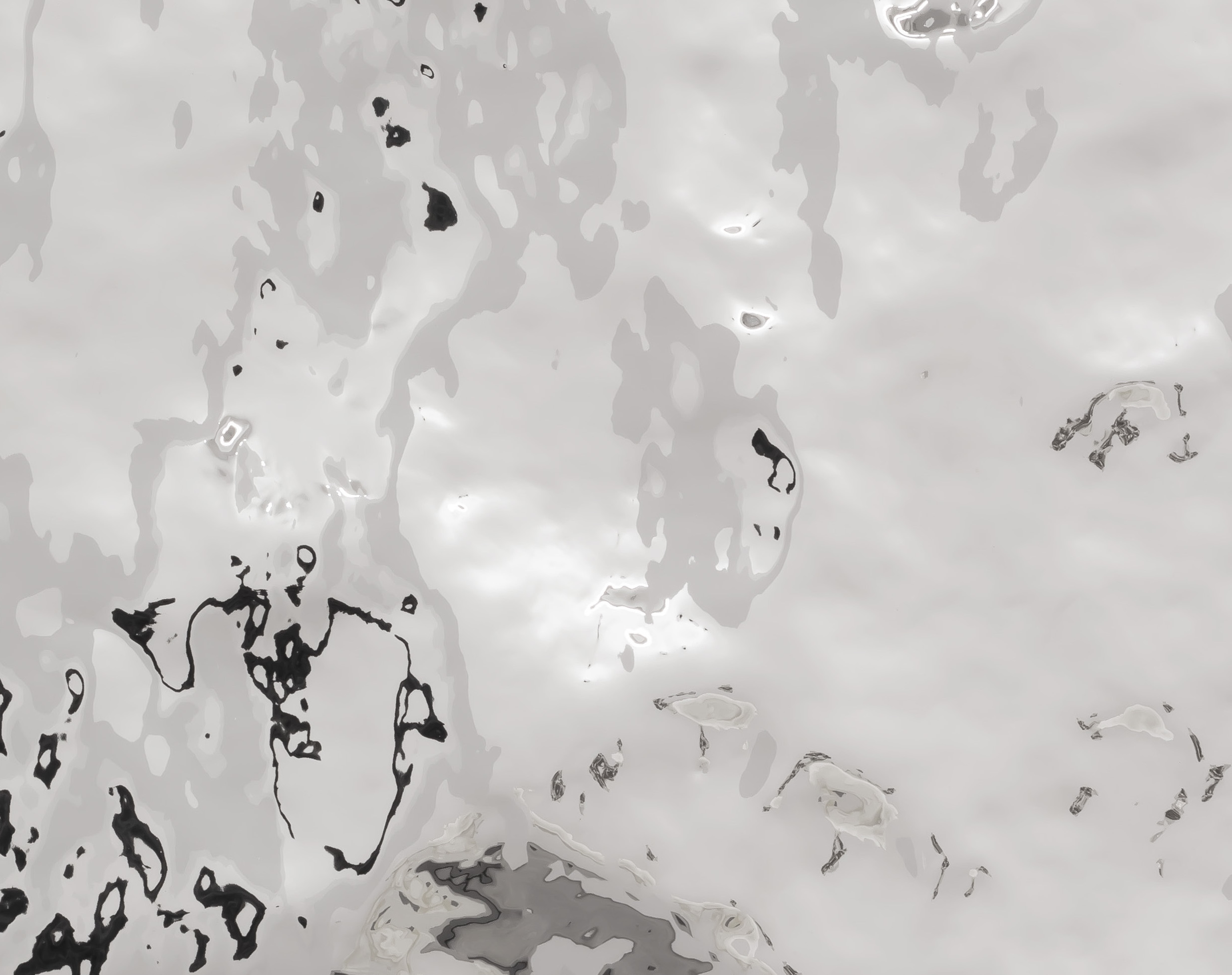
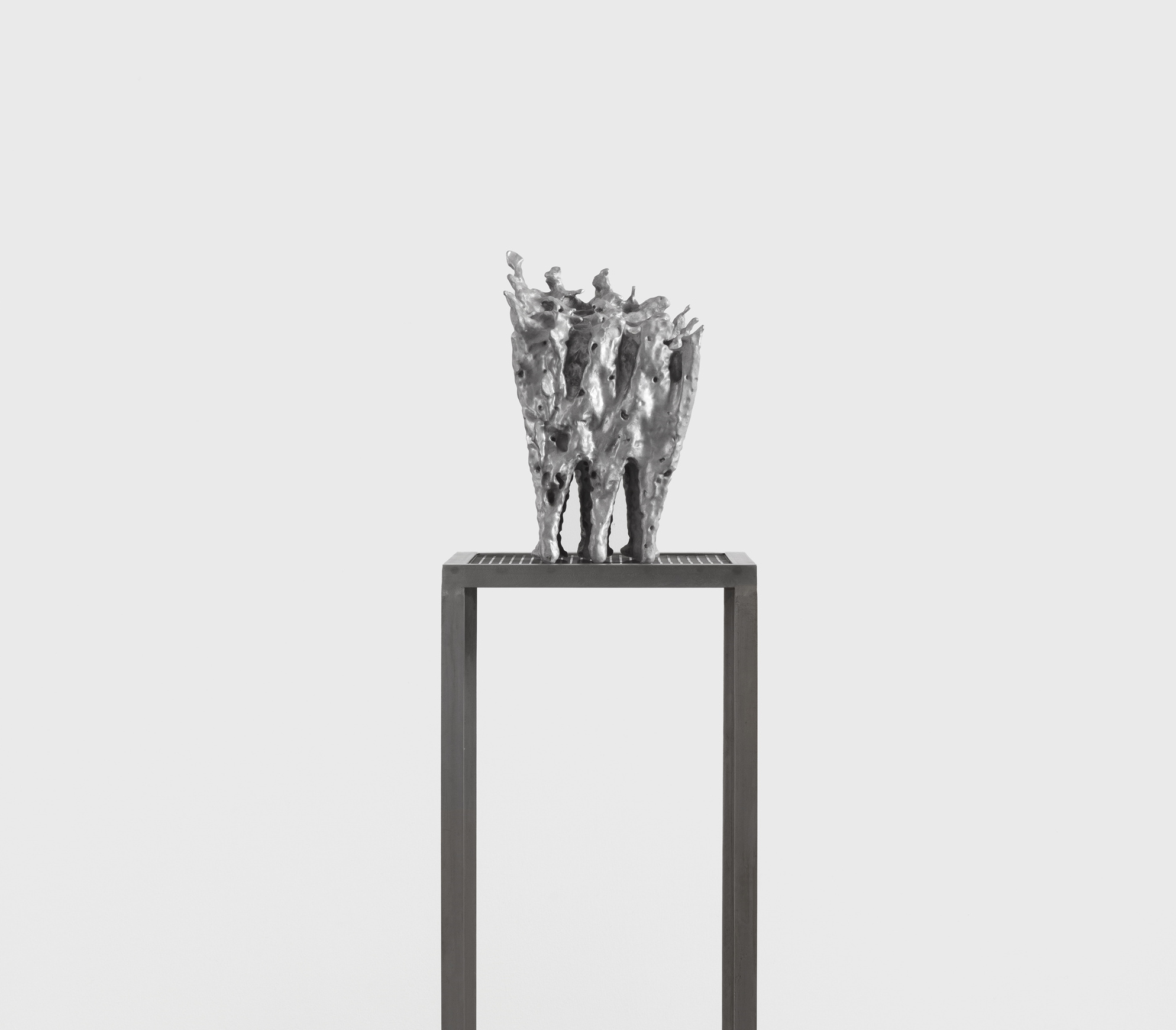
Replicate an Artificial Rock into a plaster sculpture to be used for education. A plaster sculpture can be used as a hypothetical model for studying the world, like the Large Hadron Collider used by scientists. In fact, the world is a model, or a modeled world.

The shapes of my “Artificial Rocks” follow the theorem that no two rocks in nature are alike. This was the first time I joined two identical artificial rocks in reverse to create a rock that was impossible to find in nature—it is balanced, but not symmetrical (not a mirror image). It further explores the artificial concept of “artificiality.”

When building a garden, the Chinese often use real mountain rocks to simulate a mountain view; this feature is colloquially referred to as an “artificial rockery.” What then, should we place in front of a new building? My experiment was to turn an artificial rockery into a sculpture, a reflection of my contemplations. Normally, “realness” lies in plain nature, while its opposite—the artificial world—is considered “fake.” But when we see this fake rock made of stainless-steel (using the stone-rubbing technique), the real appears to be fake and the fake appears to be real, echoing the quote “illusion is reality, reality illusion.” Stainless steel is an upgraded alloy technology invented for in contemporary society; it makes so-called “rust-free” metal possible. This unnatural desire fulfils a genuine pursuit of modern people, while the return to true nature has become mere wishful thinking. This contradictory logic is mirrored on the rock’s polished surface, mixing the artificial with the natural, fusing tradition with modernity.

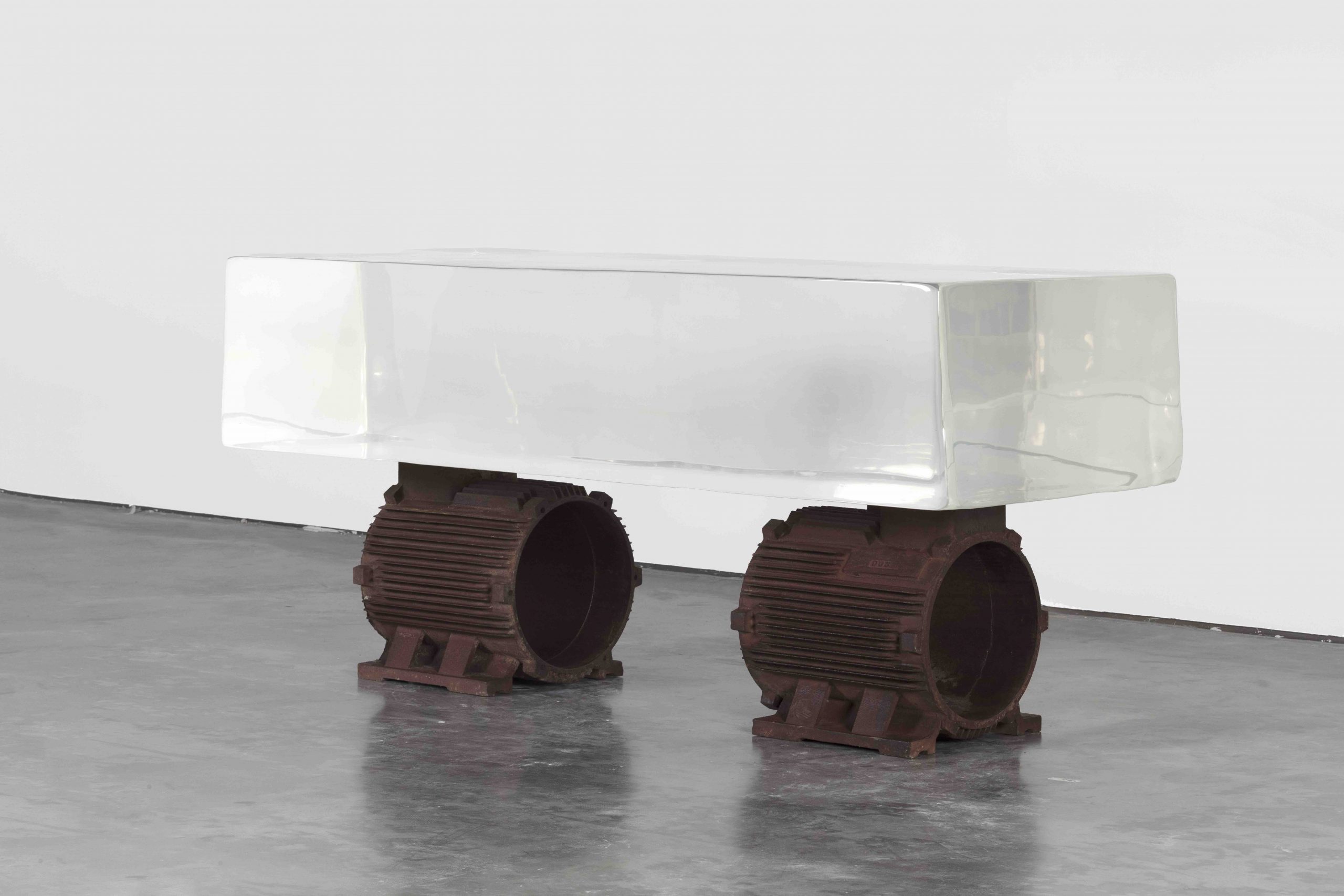
Zhan Wang applies the transparent material to model a rock, have it polished, and encase it in the same transparent material. In theory, the original rock should disappear into the encasement. Since it was hand-crafted, however, the outline of the originalrock remains faintly visible when the light hits it.
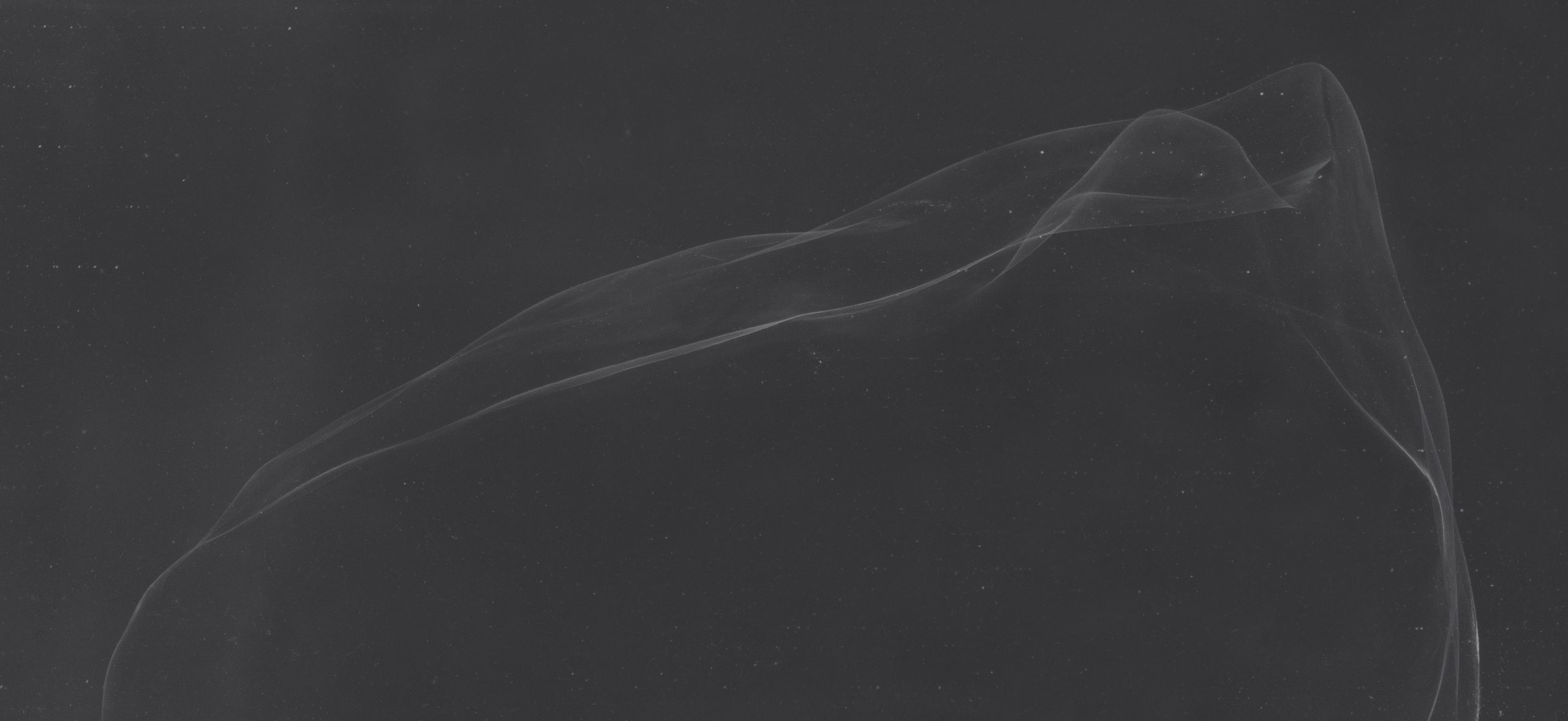
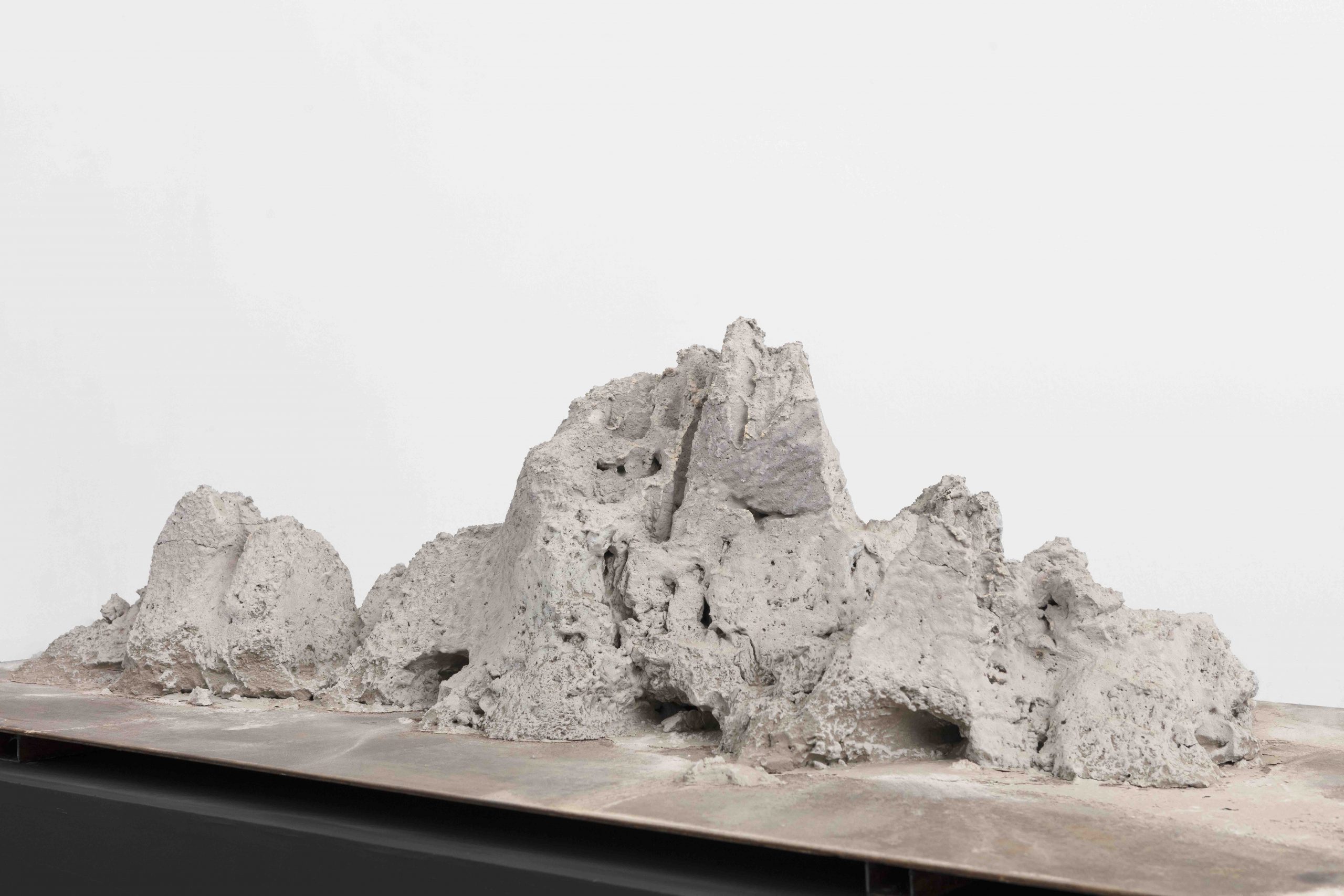
This piece of artwork was generated from the artist’s interest of the formation of natural mountains. In 2010, the artist worked together with engineers to design and create a huge machine, named “Suyuan Stone Generator” ——natural elements such as wind, rain, waves, earthquakes and light is generated from the interior of the generator. These forces shape the mixed strong land plaster “naturally” for an hour and solidify to “stone” which achieves the same effect of weathered surfaces of a stone aged hundreds of millions of years.
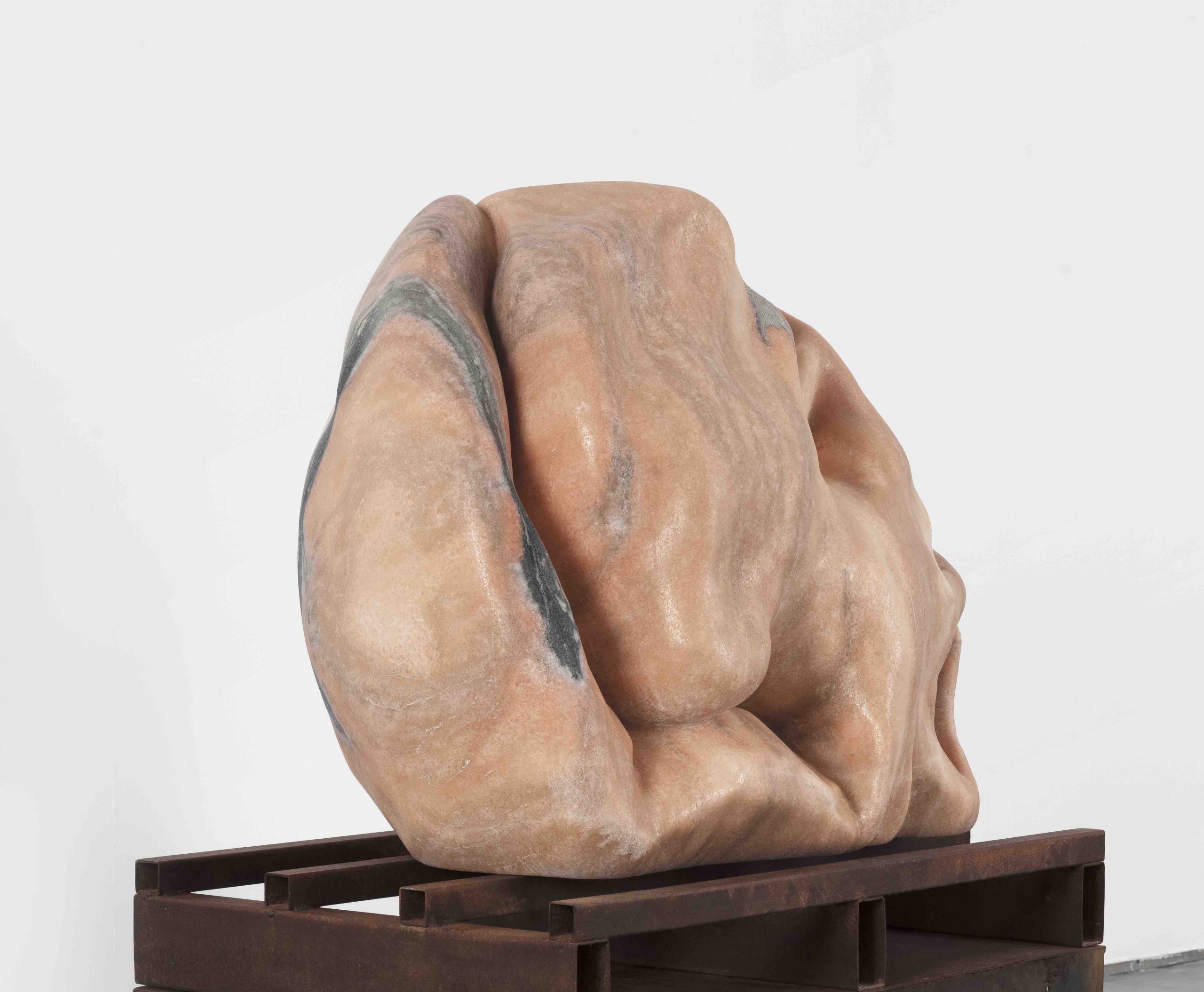
“Morph” series is the result of the artist's long-term creation between 2004 and 2017. The artist used traditional sculpture techniques to create three-dimensional sculptures of the reflections of his body on the stainless steel surface of his own "Artificial Rock" series of sculptures, relying on his own individual visual perception and imagination. The works offset the blank space between a two-dimensional “image” and a three-dimensional “form”, giving weight, detail and texture to the “image” resulting in a carved marble statue. Included in the skills of traditional sculpture-making lie the ability to utilize the inherent grain and texture of the natural stone, the processes of sculpting which have been passed down from the Renaissance to the present day and include a melding together of traditional Chinese temple sculpture and South American sculptural aesthetics.
The conception of “Form in Flux” firstly comes from an assumption, “How could we get changeable forms after putting a human body into the lava?” A challenge may be realized by using scientific means in the real world. As Zhan Wang’s request, the scientists designed a software to simulate the fluid of lava by combining Computational Fluid Dynamics and natural parameters. The artist used a 3D scanner to scan the form of his own body which he then reduces into individual particles. After this, he places theses into a likewise particlized fluid field, then calculates this through a hydrodynamic algorithm and computing machine which is instructed to mimc the innumerable changes that molten rock can undergo in a natural state. These changes are formed by the automatic yet random relationships between an fluid environment and its form, in turn inciting the gradual deformation of each and every independent form, ultimately melting within the fluid field formed in participation. The artist carefully selects one of these forms, 3D prints it and uses hammer and blowtorch to give it form. In the final stage, the color of sculpture renders a state of nirvana.

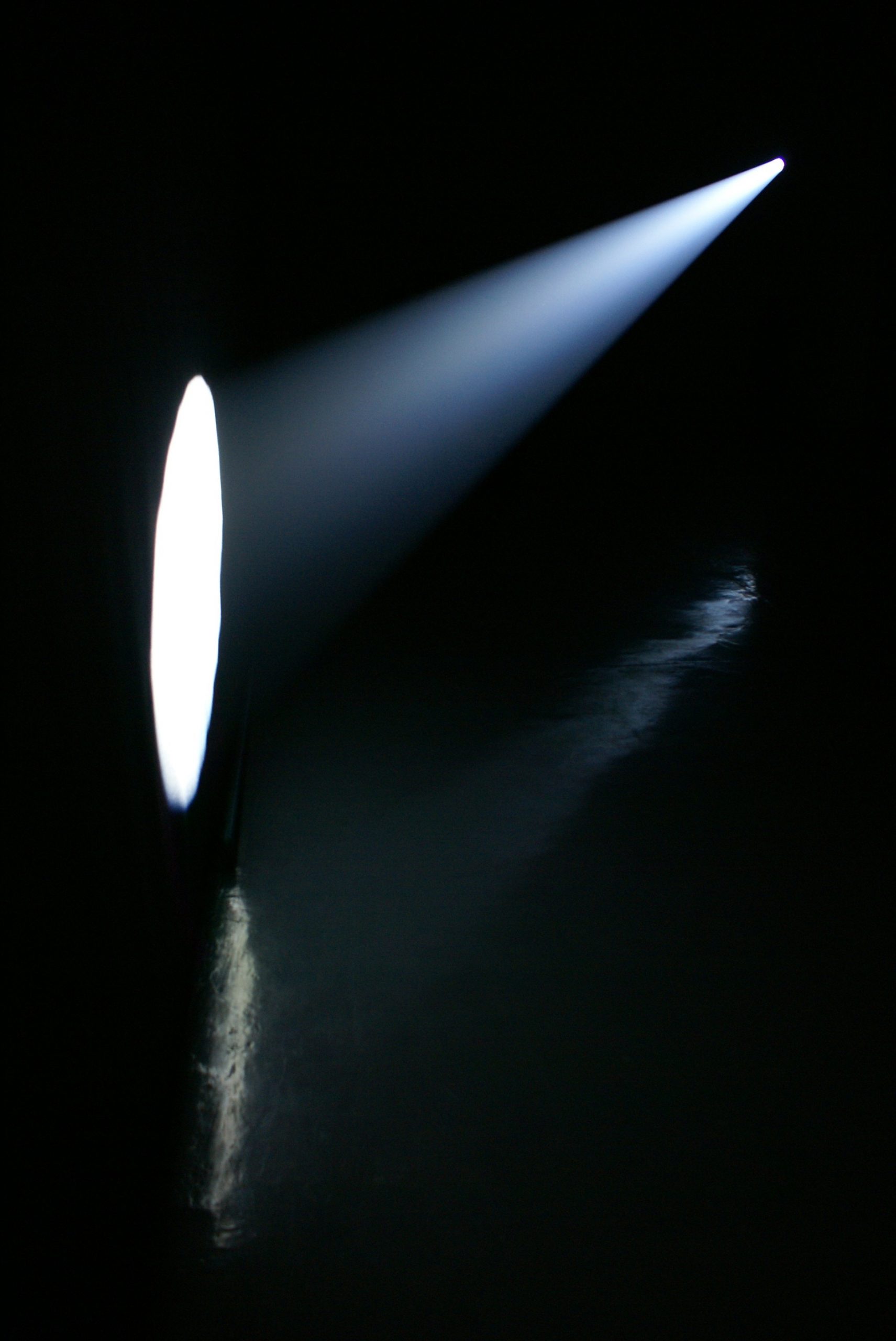
In my solo show at Long March Space in 2012, only a beam of light was displayed. It was inspired by my childhood memory of seeing dust floating in the sunlight shining into the room. The dust that we think does not exist simply because we don’t see it is, in fact, always living with us. You don’t see what you are immersed in.
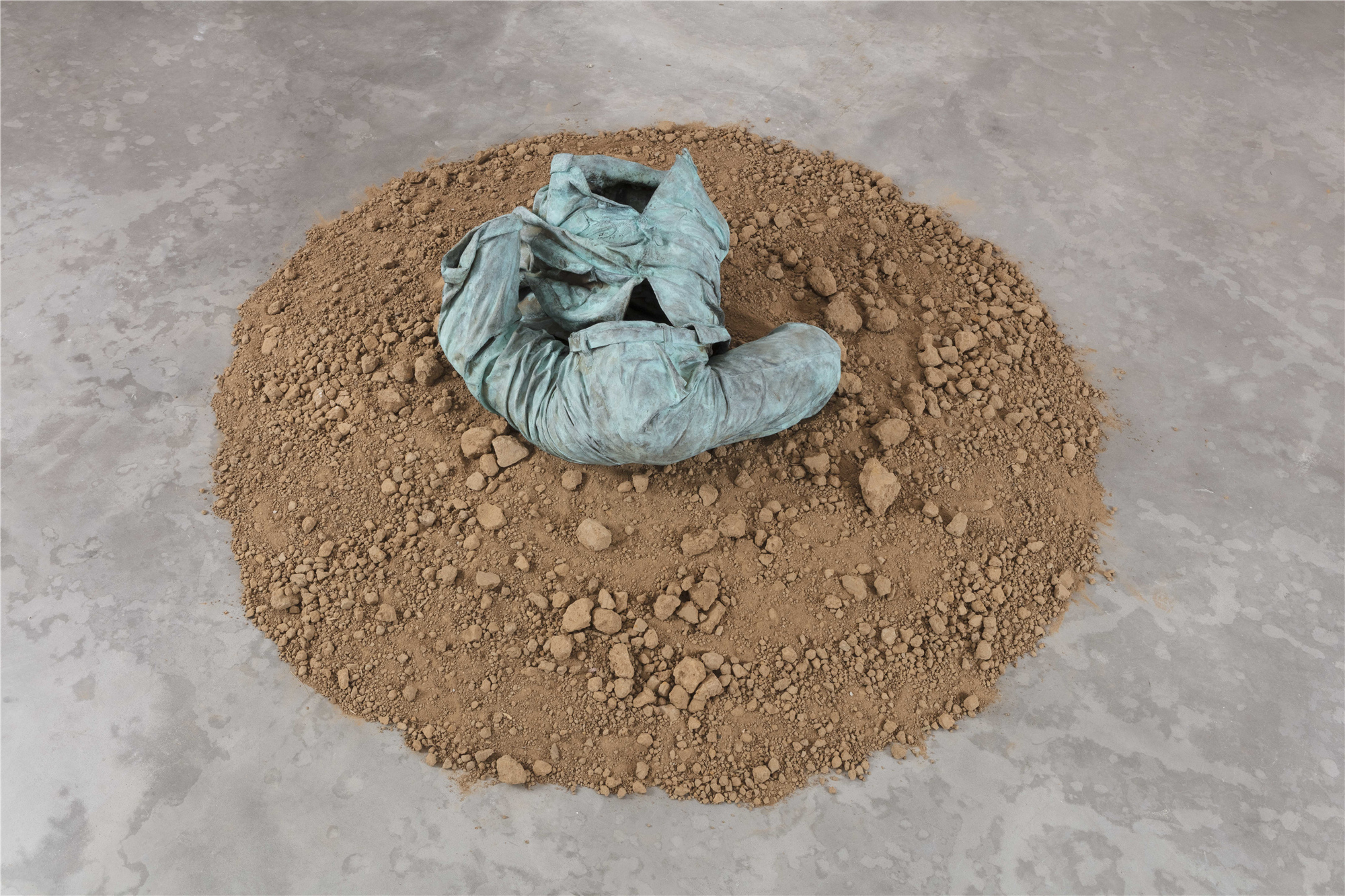
Man Wearing Mao Suit (left) is a painted sculpture. It examines the feelings of a besieged man. Following this piece, I created the Shell of Mao Suit series—putting Mao suits on linen-covered, hollow clay figures and processing them into shell-like objects, suggesting a cicada’s metamorphosis. The series was made in 1993 and exhibited in 1994. I also performed a symbolic burial of the sculpture on the outskirts of Beijing; it was later buried beneath the Guangdong Museum of Art during the 2002 Guangzhou Triennial.
Zhan Wang was born in 1962 in Beijing, China. In 1996 he graduated from the sculpture department of the Central Academy of Fine Arts (CAFA) and he currently lives and works in Beijing where he teaches sculpture at CAFA. Zhan Wang is considered as one of the most important contemporary artists in China whose artistic creations touch upon sculpture, installation, actions, photography and video. Zhan Wang’s practice is firmly rooted in the culture by which he has been surrounded with over the course of his life and traditional Chinese understanding, whilst at the same time attempting to interpret the features of traditional culture from an individual perspective and by means of a distinctive creativity deduce anew and poetically transpose the effects of history, traditions, the spirit, the natural world onto the human situation and perceptions via his works by enfolding subject matter fromurbanization, artificial simulation and industrialization, alongside the materials used in the works themselves which lead to the creation of an entirely different connotation.
Zhan Wang: Objects of Idea
Long March Space is pleased to present “Zhan Wang: Objects of Idea”. The online viewing room will be launched from 23 July 14:00 to 31 July 24:00 (CST). The online viewing room will present the entire 23 artworks in this solo exhibition, showing the artist’s diverse explorations in material, technique and language throughout his creative career, and his methodology for integrating conception with production.

As a representative figure to experimental sculpture construction in Chinese contemporary art, Zhan Wang specializes in applying simple material forms to create aesthetic situations that suggest “the communication between mind and matter.” In Imprinting Terrain, Zhan Wang continues to employ the technique implying traditional craftsmanship – manual rubbing, but has removed from the subjective body of “Taihu Stone” as the incarnation of his literati interest and directly connects himself to the lived environment instead. He uses the very thin stainless steel plate with a thickness of 5 millimeters to cover one square meter of original land, then by repeated beatings to give detail to its surface texture. The power of abstracting real property into “unreal/fake” property is namely this: the separation of land the thing immovably attached to the land by some individual agency indeed liberates a shared object of social exchange from public ownership.
This work was originally made in my studio in Beijing’s Tongzhou District. At the end of 2015, my studio relocated from Tongzhou District to Shunyi District. For my farewell piece, I replicated a piece of Tongzhou land using the stone-rubbing technique. The price for the piece ofland was the mean value of the residential properties sold in Tongzhou from 2015 to 2018, which was 41,314.39 RMB (per square meter).According to the per capita living area in Beijing—which was 32 square meters—I made and sold 32 pieces of Tongzhou land.


The mathematical algorithms of fluid mechanics are employed here to simulate the mutations of a square. A square is an artificial, abstract, and inorganic shape that does not exist in nature. When it enters the fluid world, it goes through a series of changes and morphs into an organic image. The organic image is different from an abstract square in that it contains a hidden power.
Replicate an Artificial Rock into a plaster sculpture to be used for education. A plaster sculpture can be used as a hypothetical model for studying the world, like the Large Hadron Collider used by scientists. In fact, the world is a model, or a modeled world.
The shapes of my “Artificial Rocks” follow the theorem that no two rocks in nature are alike. This was the first time I joined two identical artificial rocks in reverse to create a rock that was impossible to find in nature—it is balanced, but not symmetrical (not a mirror image). It further explores the artificial concept of “artificiality.”
In the My Personal Universe (2011), the artist simulated the original form of the Big Bang by using the scene of rock explosion. However, in the project Universe, the entity of the “universe” can be seen from one slice. The stone falling freely from 20 meters in air and cracked because of the resistance from the concrete floor. The explosion moment was solidified in a more flat way, copied by using stainless steel material and fixed on the stainless steel mirror plate with titanium plating according to the original situation. Cracked stainless steel stones and the reflected void build together a multi- layered spatial optical illusion.
By cutting continuously at a stainless steel rock, the artist tries to reach the core of the “rock”, and the dissected surface exposed have become its new surface. The original piece cut into similar shapes conveys the artist’s conception of the co-existence of the universe and the individuals, as well as an integrated entirety. Furthermore, the recording of the process of which cutting these arbitrary shapes, allow the viewer to observe the natural formation of the rock and discover the artificial aspects of its becoming.
When building a garden, the Chinese often use real mountain rocks to simulate a mountain view; this feature is colloquially referred to as an “artificial rockery.” What then, should we place in front of a new building? My experiment was to turn an artificial rockery into a sculpture, a reflection of my contemplations. Normally, “realness” lies in plain nature, while its opposite—the artificial world—is considered “fake.” But when we see this fake rock made of stainless-steel (using the stone-rubbing technique), the real appears to be fake and the fake appears to be real, echoing the quote “illusion is reality, reality illusion.” Stainless steel is an upgraded alloy technology invented for in contemporary society; it makes so-called “rust-free” metal possible. This unnatural desire fulfils a genuine pursuit of modern people, while the return to true nature has become mere wishful thinking. This contradictory logic is mirrored on the rock’s polished surface, mixing the artificial with the natural, fusing tradition with modernity.


Zhan Wang applies the transparent material to model a rock, have it polished, and encase it in the same transparent material. In theory, the original rock should disappear into the encasement. Since it was hand-crafted, however, the outline of the originalrock remains faintly visible when the light hits it.


This piece of artwork was generated from the artist’s interest of the formation of natural mountains. In 2010, the artist worked together with engineers to design and create a huge machine, named “Suyuan Stone Generator” ——natural elements such as wind, rain, waves, earthquakes and light is generated from the interior of the generator. These forces shape the mixed strong land plaster “naturally” for an hour and solidify to “stone” which achieves the same effect of weathered surfaces of a stone aged hundreds of millions of years.

“Morph” series is the result of the artist's long-term creation between 2004 and 2017. The artist used traditional sculpture techniques to create three-dimensional sculptures of the reflections of his body on the stainless steel surface of his own "Artificial Rock" series of sculptures, relying on his own individual visual perception and imagination. The works offset the blank space between a two-dimensional “image” and a three-dimensional “form”, giving weight, detail and texture to the “image” resulting in a carved marble statue. Included in the skills of traditional sculpture-making lie the ability to utilize the inherent grain and texture of the natural stone, the processes of sculpting which have been passed down from the Renaissance to the present day and include a melding together of traditional Chinese temple sculpture and South American sculptural aesthetics.
The conception of “Form in Flux” firstly comes from an assumption, “How could we get changeable forms after putting a human body into the lava?” A challenge may be realized by using scientific means in the real world. As Zhan Wang’s request, the scientists designed a software to simulate the fluid of lava by combining Computational Fluid Dynamics and natural parameters. The artist used a 3D scanner to scan the form of his own body which he then reduces into individual particles. After this, he places theses into a likewise particlized fluid field, then calculates this through a hydrodynamic algorithm and computing machine which is instructed to mimc the innumerable changes that molten rock can undergo in a natural state. These changes are formed by the automatic yet random relationships between an fluid environment and its form, in turn inciting the gradual deformation of each and every independent form, ultimately melting within the fluid field formed in participation. The artist carefully selects one of these forms, 3D prints it and uses hammer and blowtorch to give it form. In the final stage, the color of sculpture renders a state of nirvana.


In my solo show at Long March Space in 2012, only a beam of light was displayed. It was inspired by my childhood memory of seeing dust floating in the sunlight shining into the room. The dust that we think does not exist simply because we don’t see it is, in fact, always living with us. You don’t see what you are immersed in.
Cezanne believed we could summarize nature in terms of the cylinder, the sphere, and the cone—which was a positive way to understand the essence of the world. Yet, when these shapes are slanted, our understanding of the world takes on a magical tint. The slanting forms have a fluid, uncertain, and dynamic effect as if they were blown over by the wind—the essence of the world takes on a skewed turn.

Man Wearing Mao Suit (left) is a painted sculpture. It examines the feelings of a besieged man. Following this piece, I created the Shell of Mao Suit series—putting Mao suits on linen-covered, hollow clay figures and processing them into shell-like objects, suggesting a cicada’s metamorphosis. The series was made in 1993 and exhibited in 1994. I also performed a symbolic burial of the sculpture on the outskirts of Beijing; it was later buried beneath the Guangdong Museum of Art during the 2002 Guangzhou Triennial.

